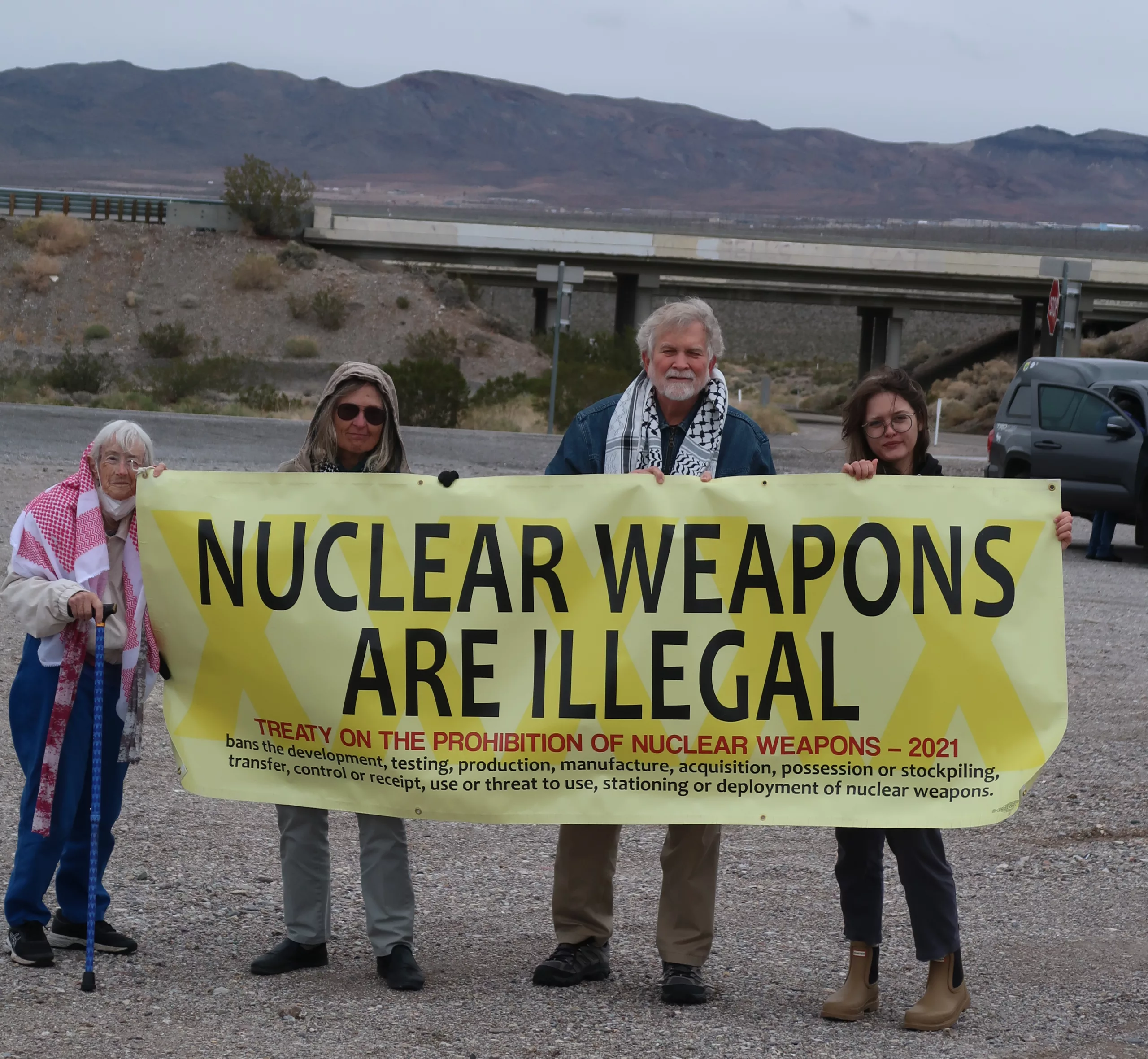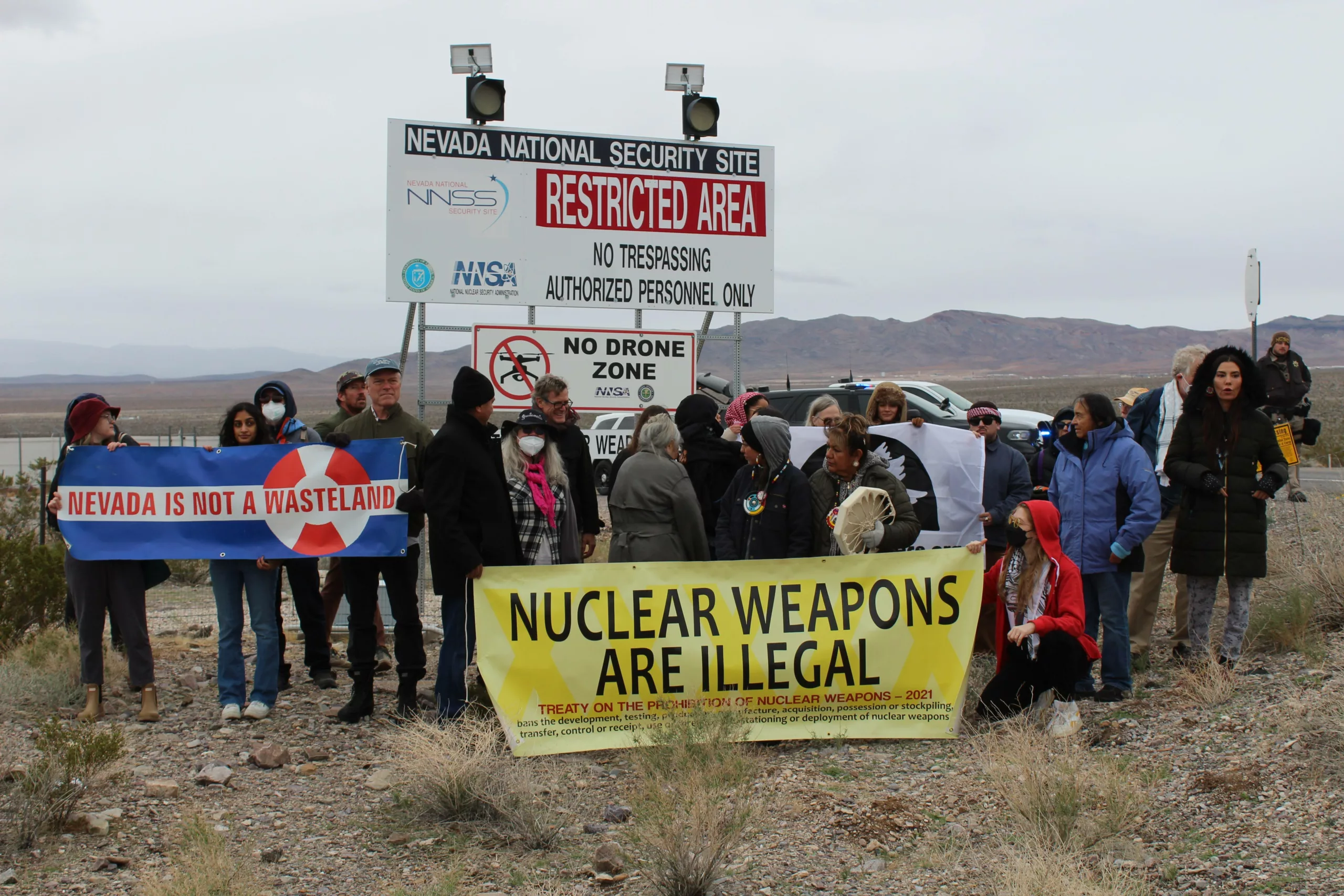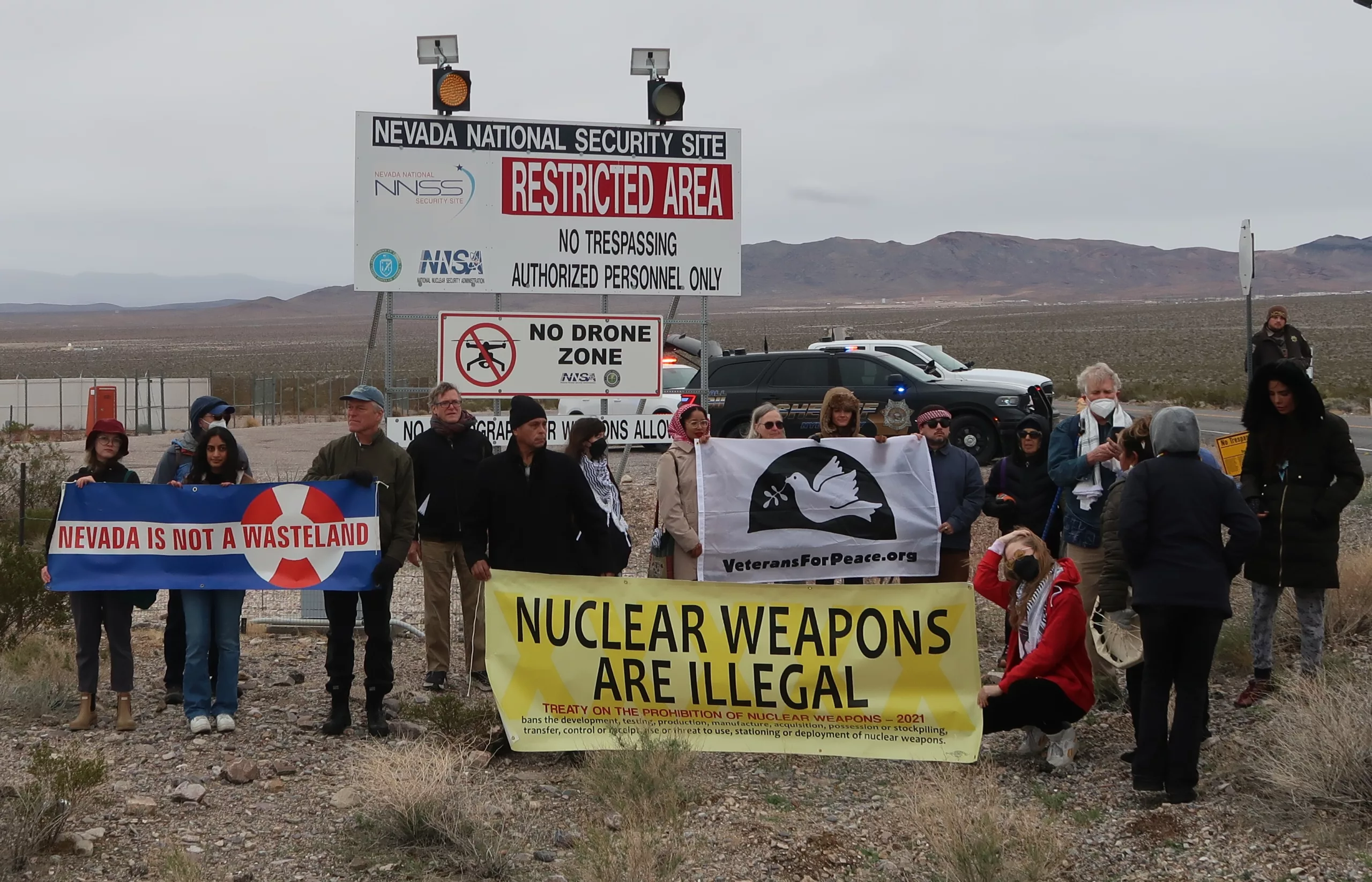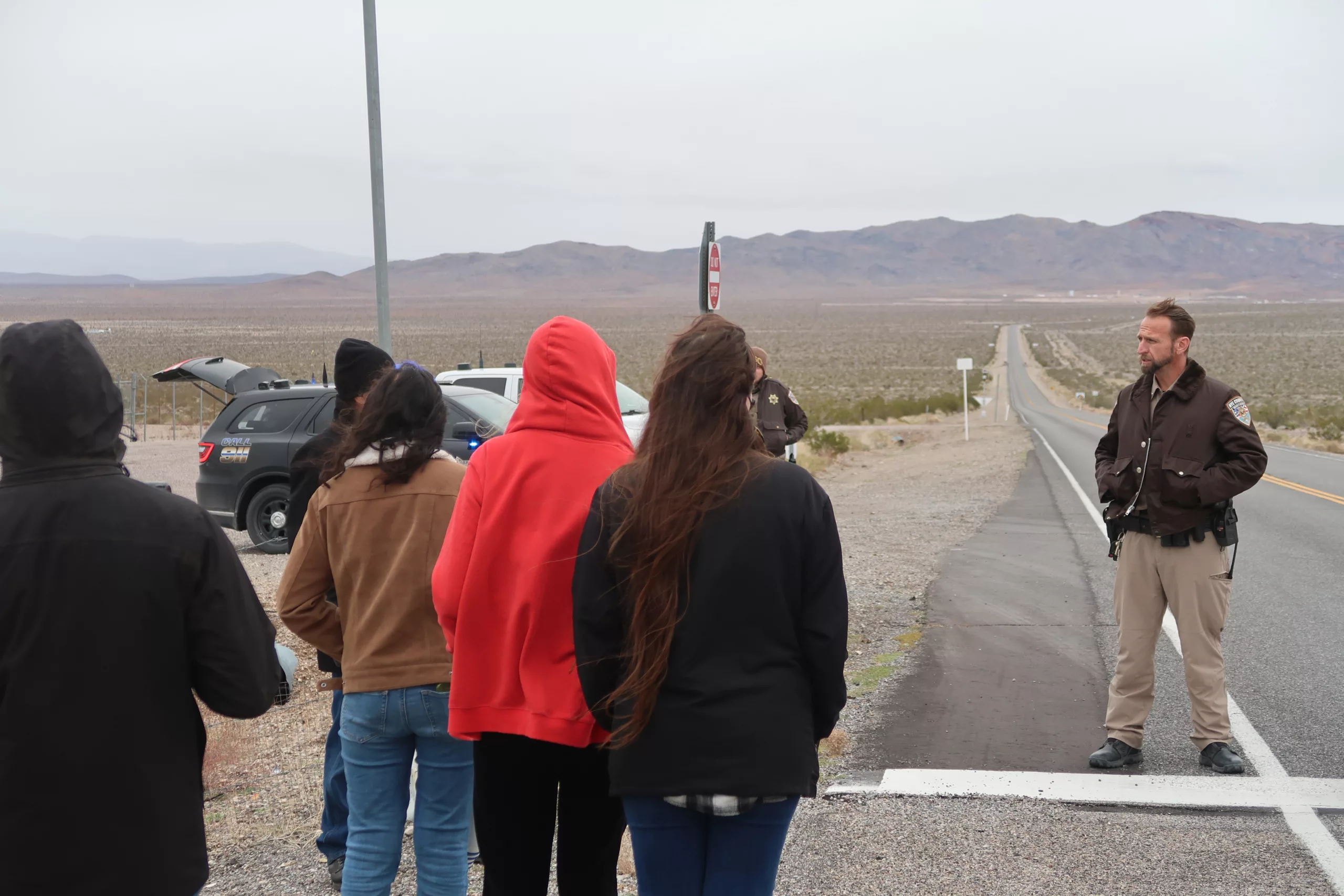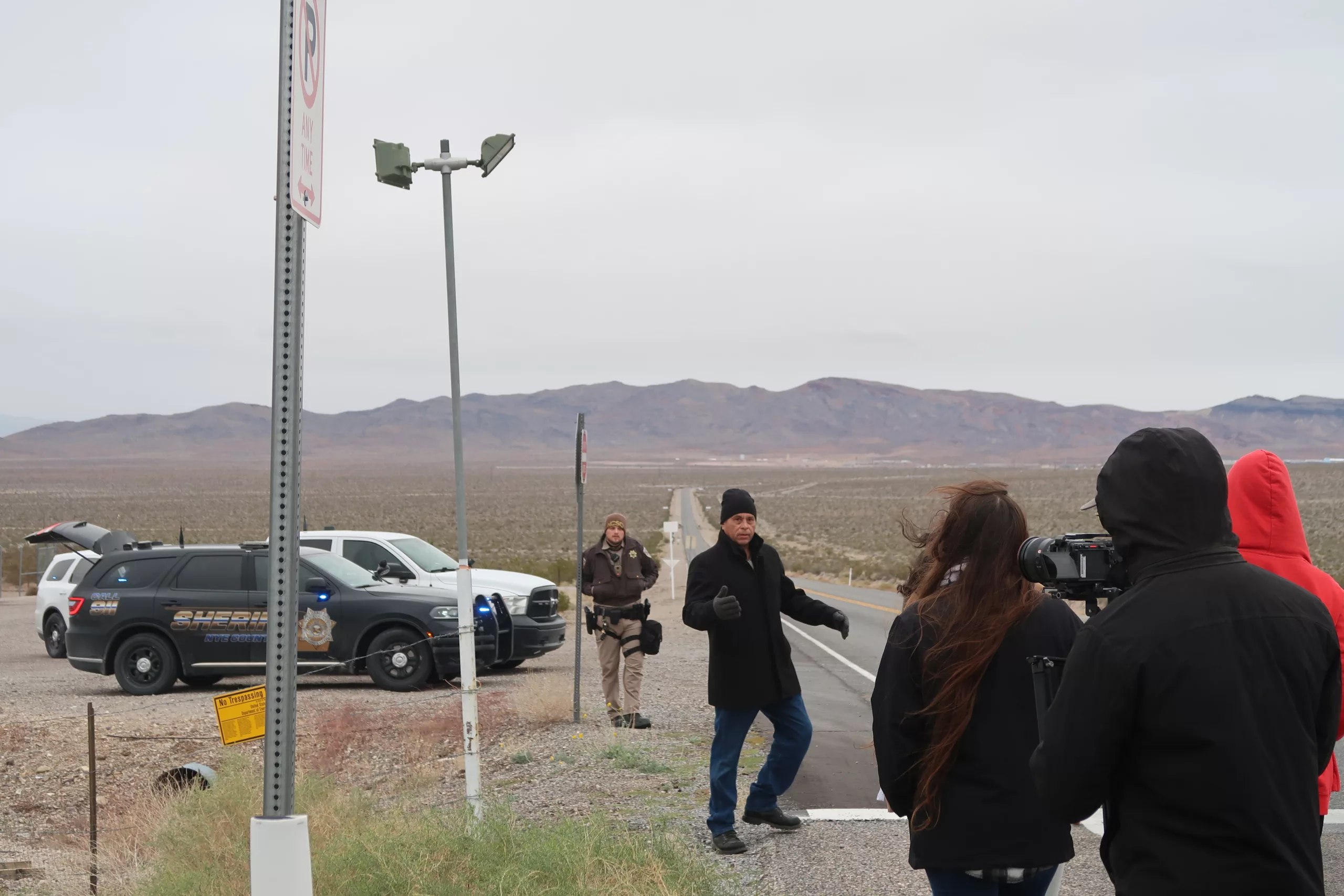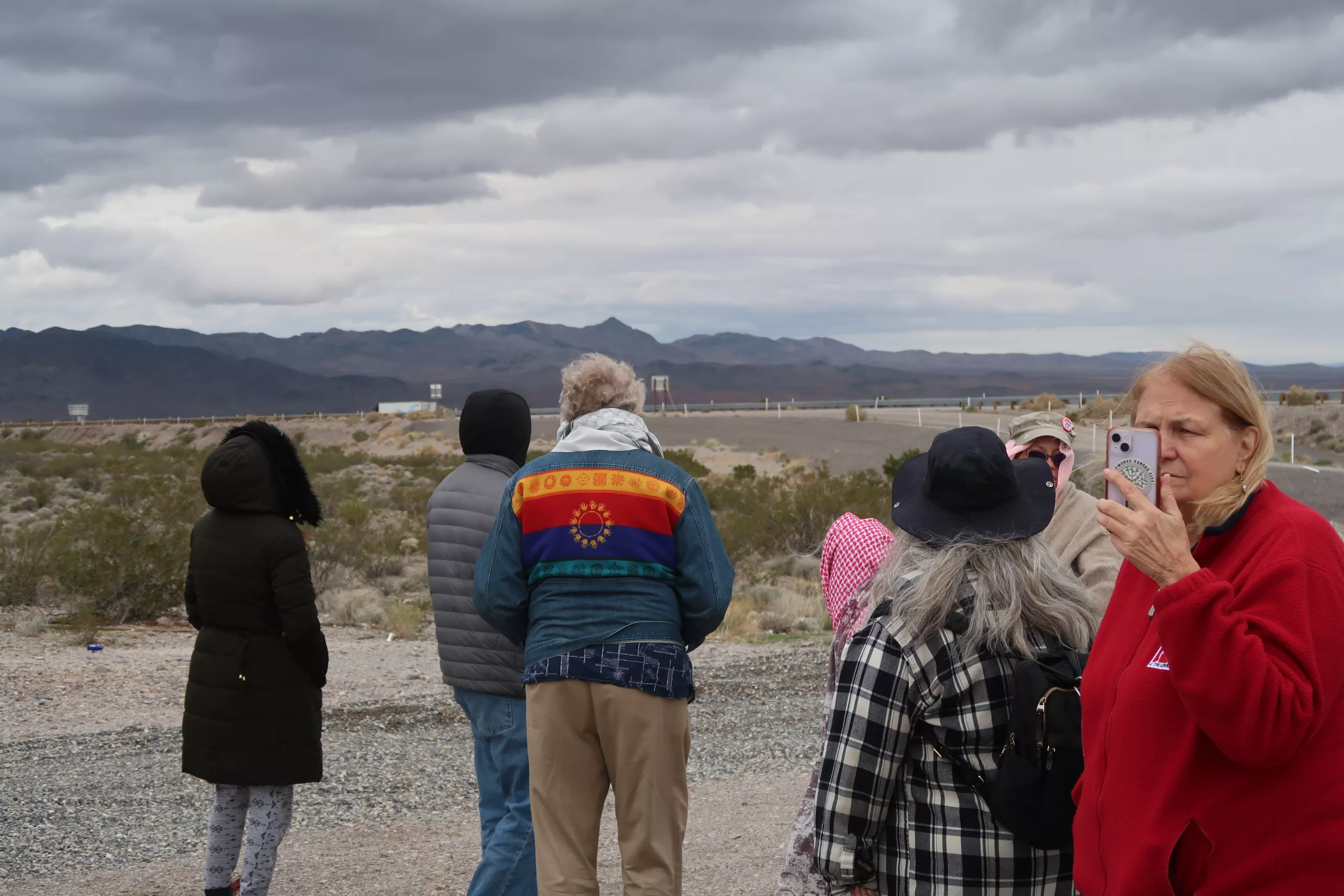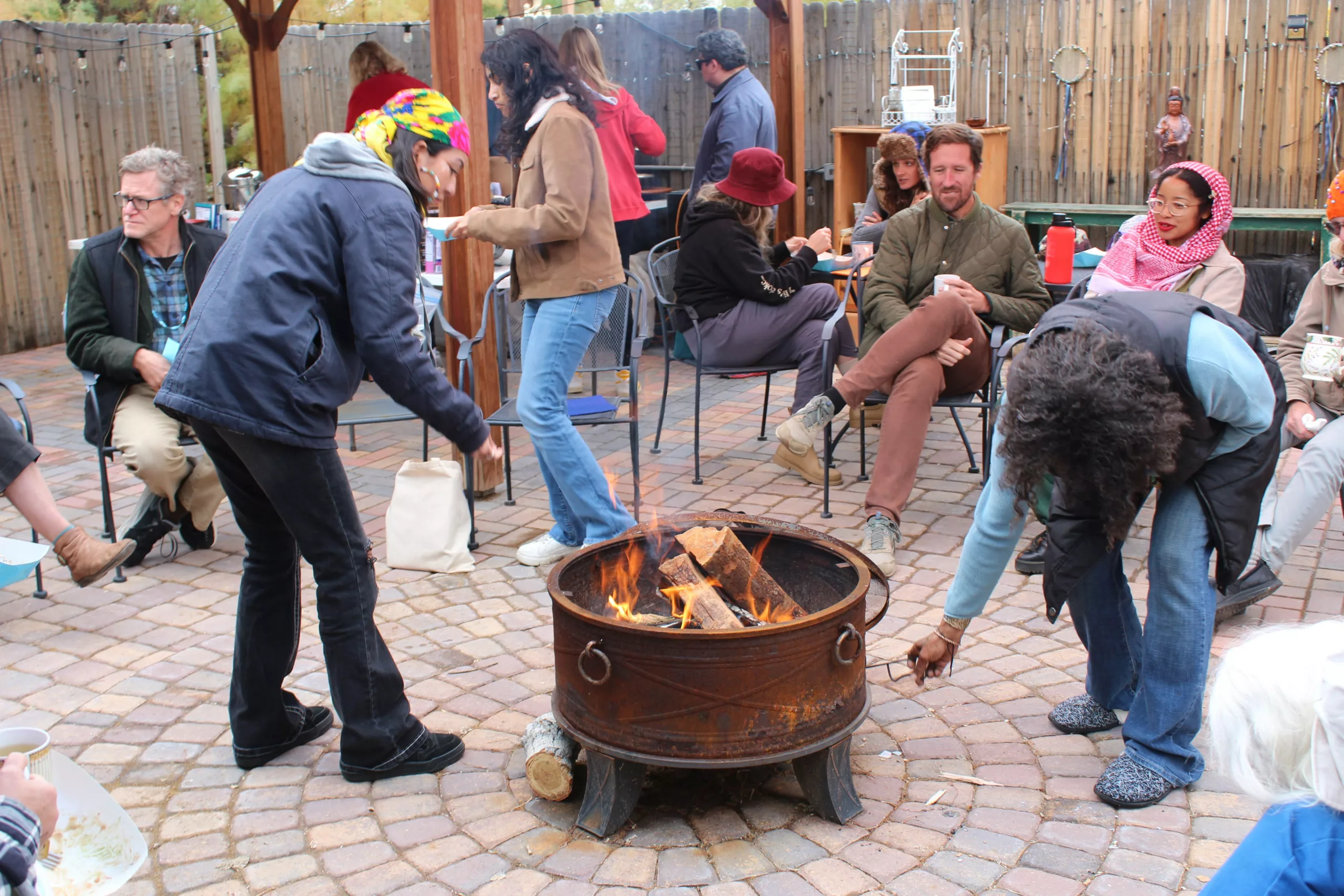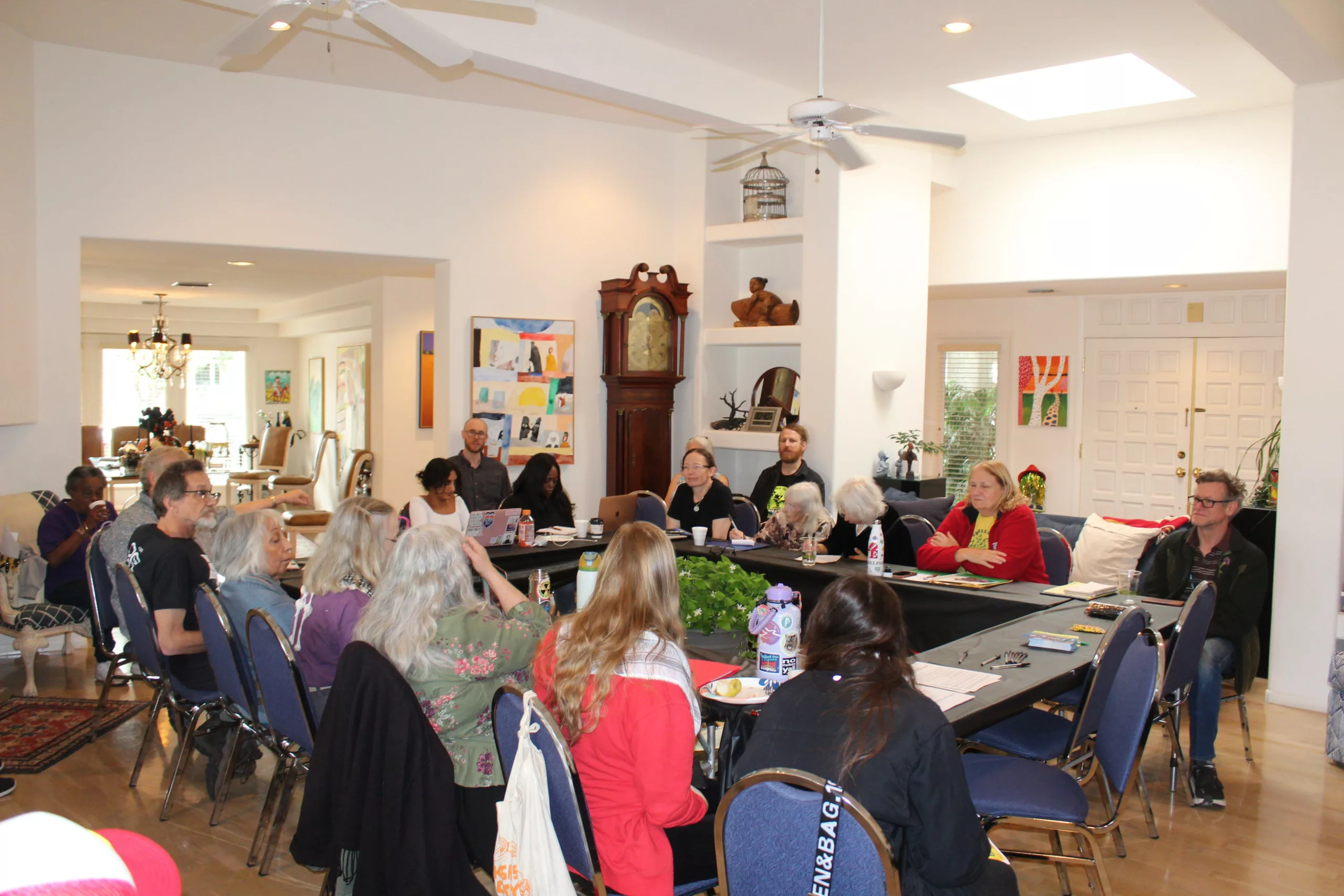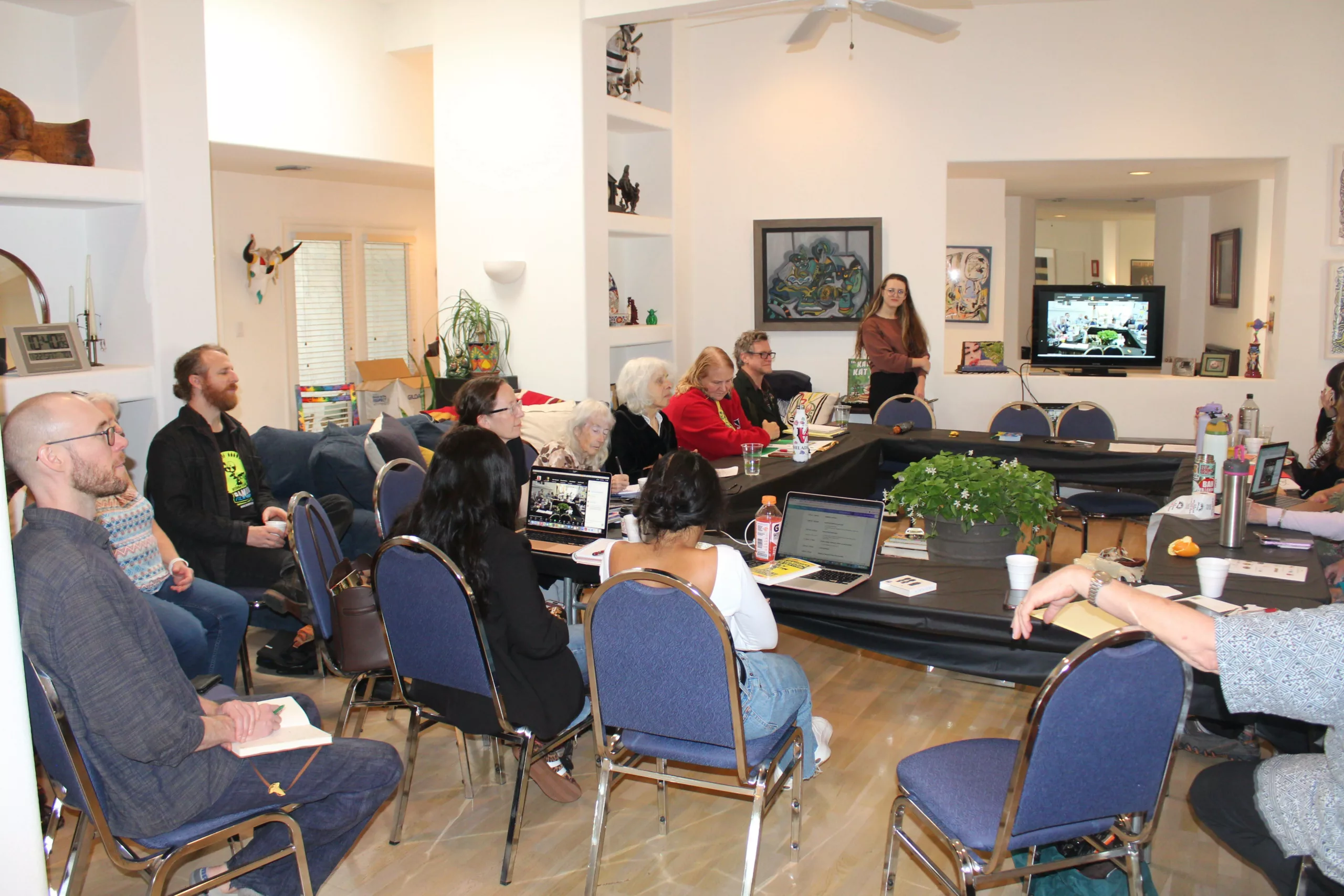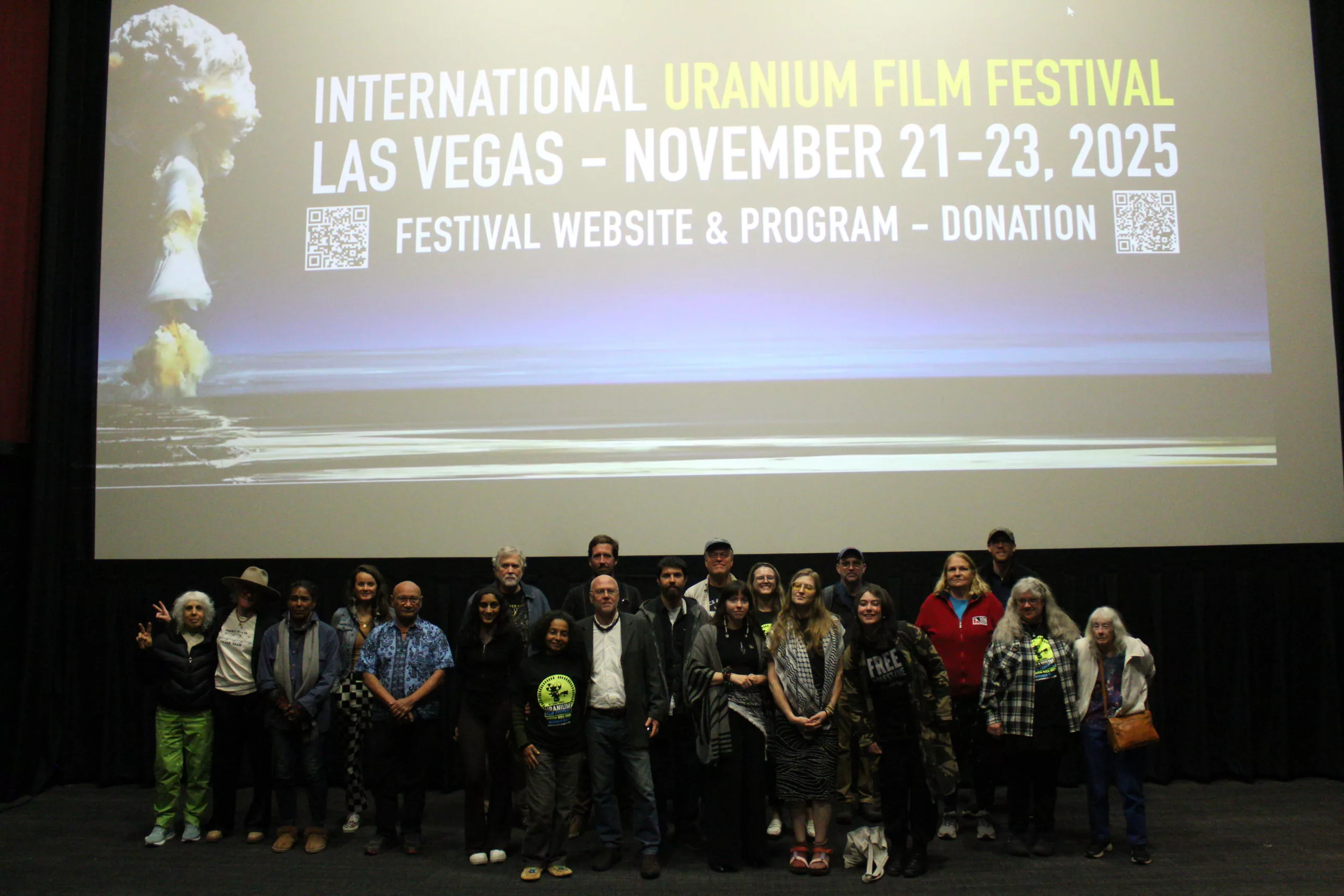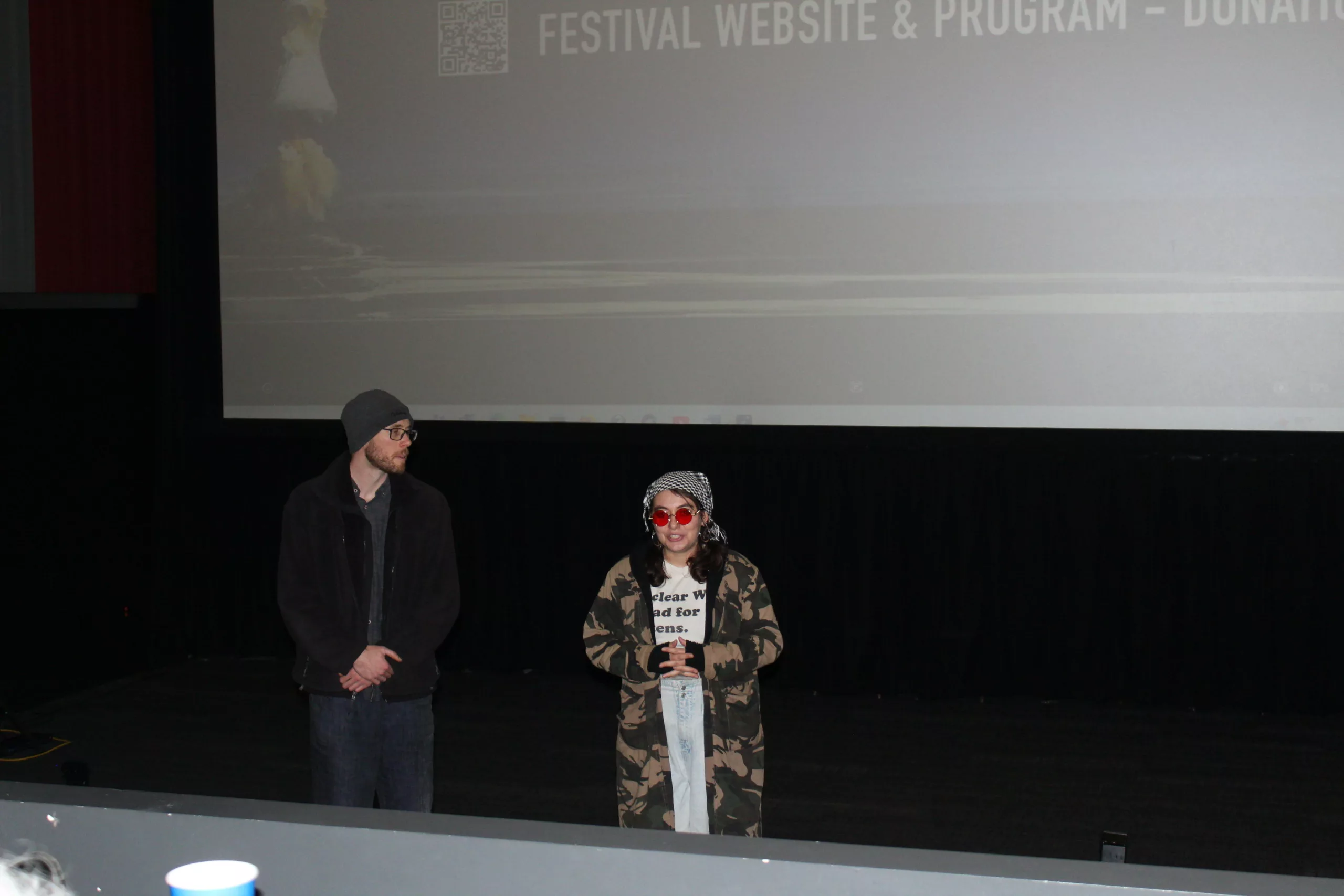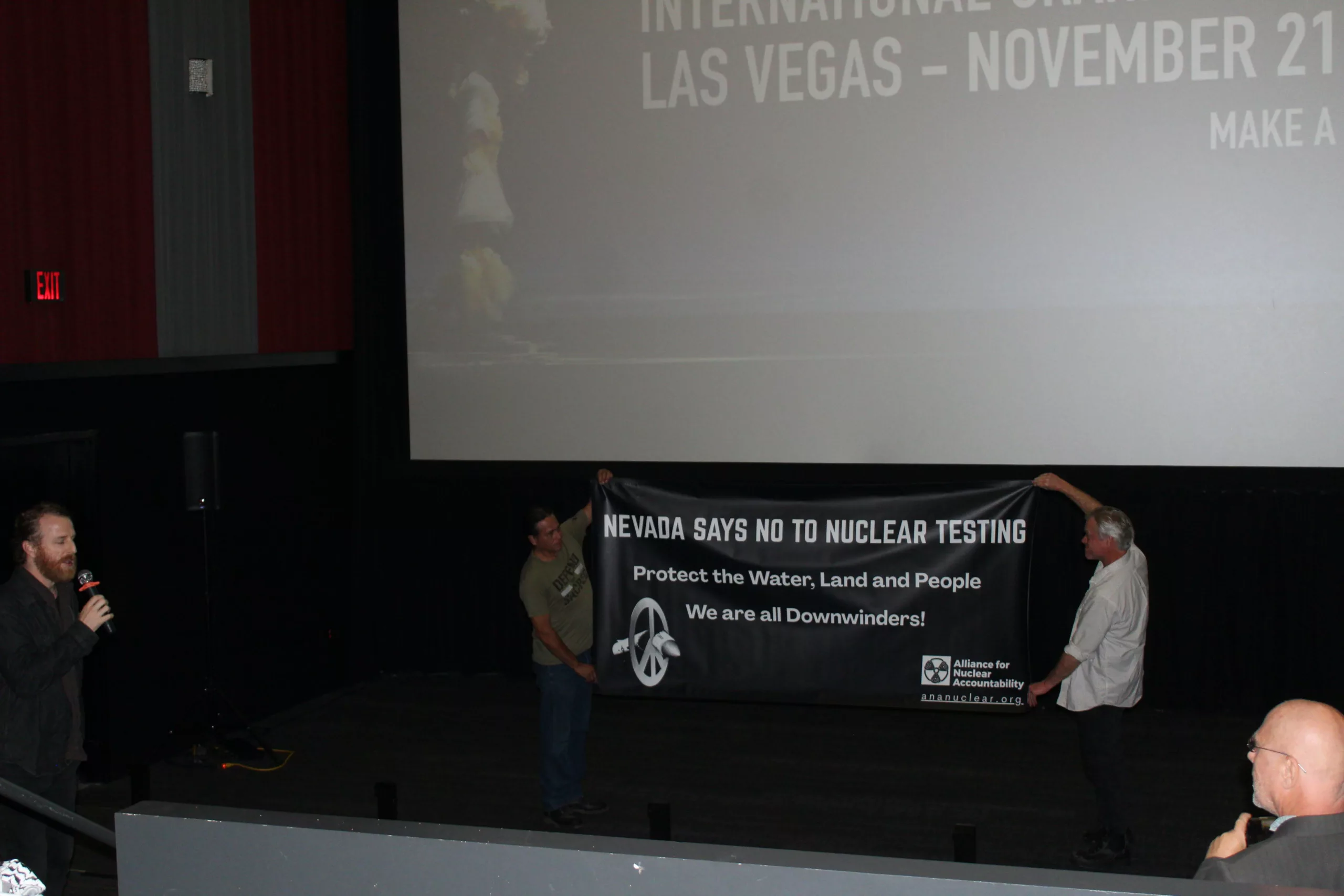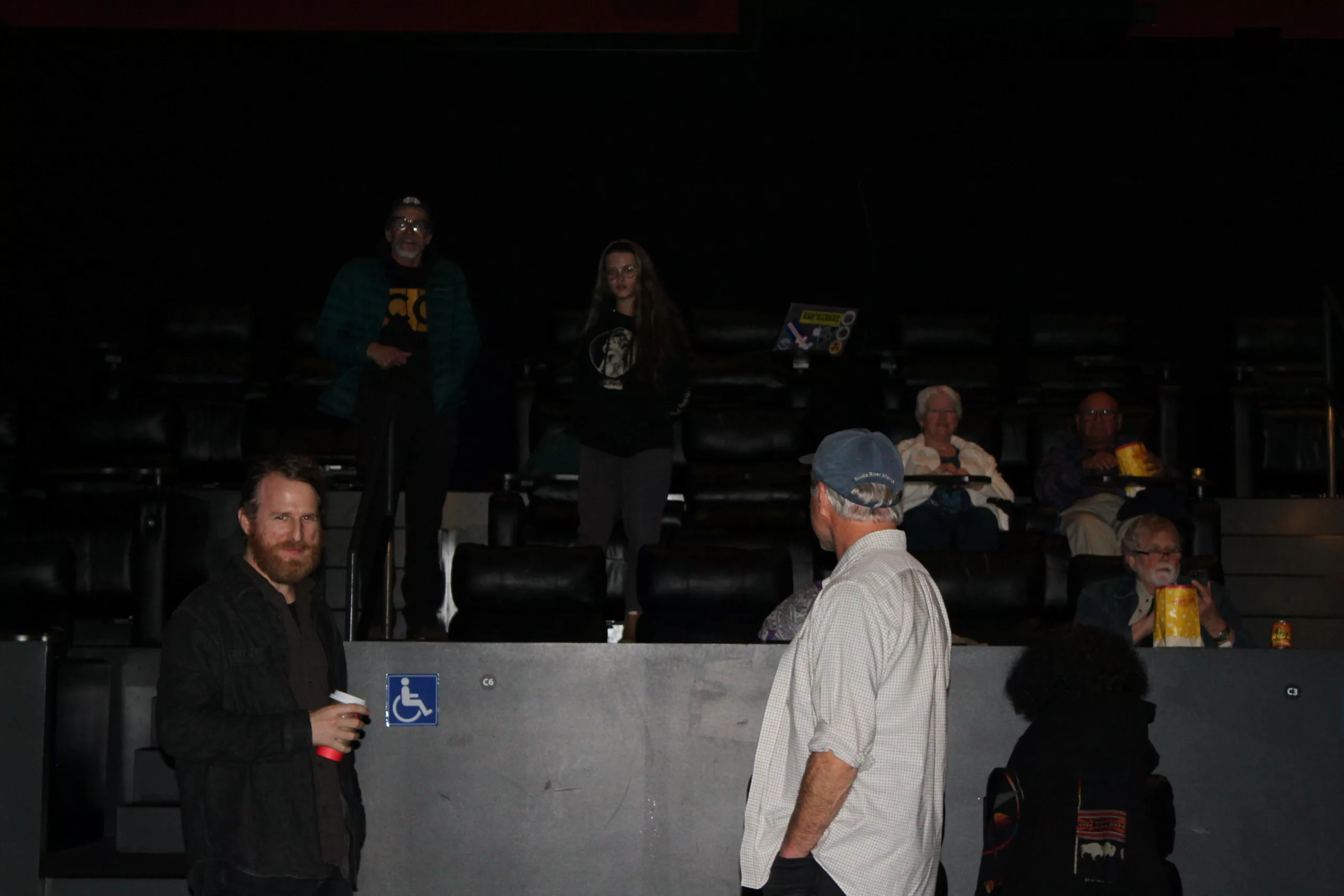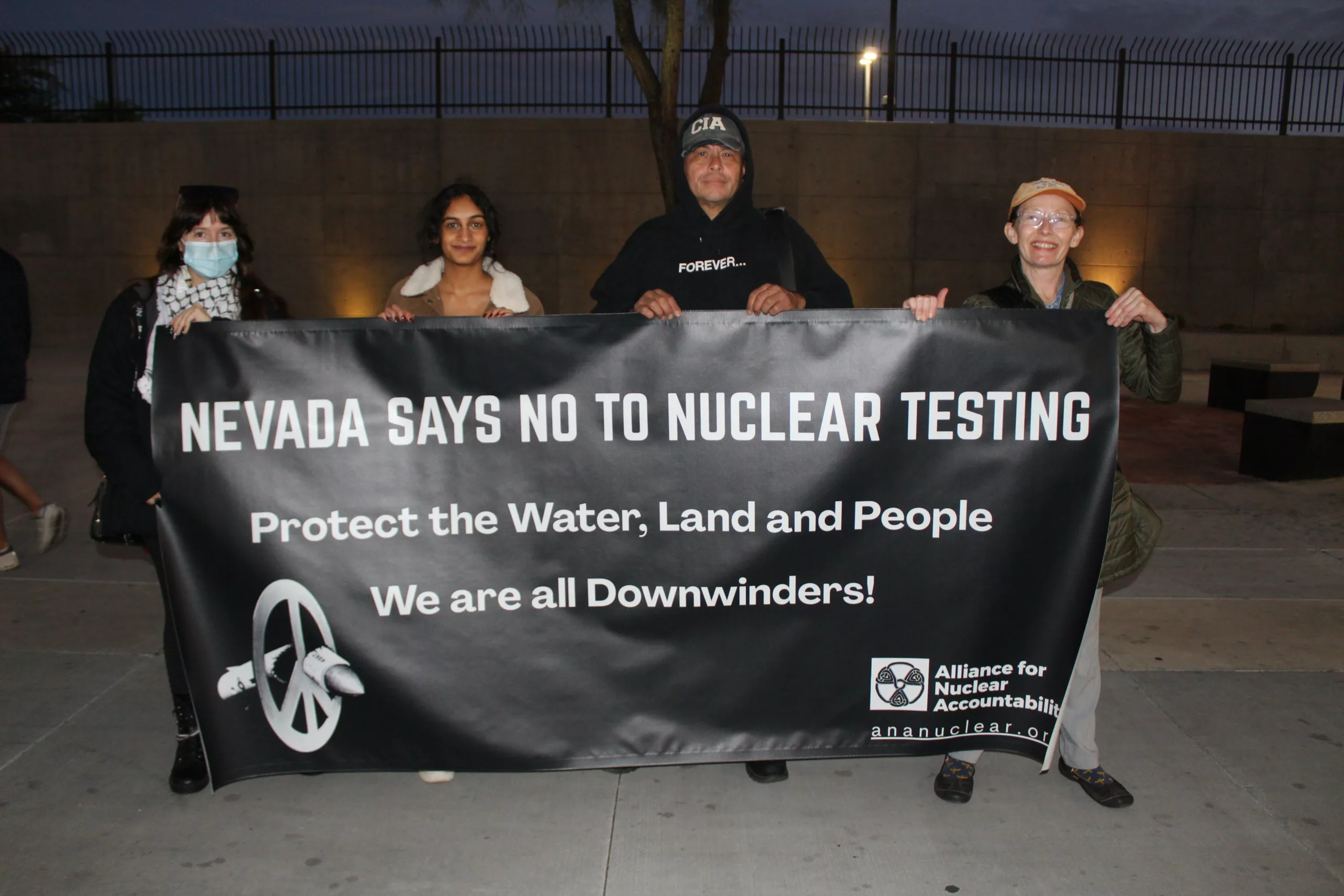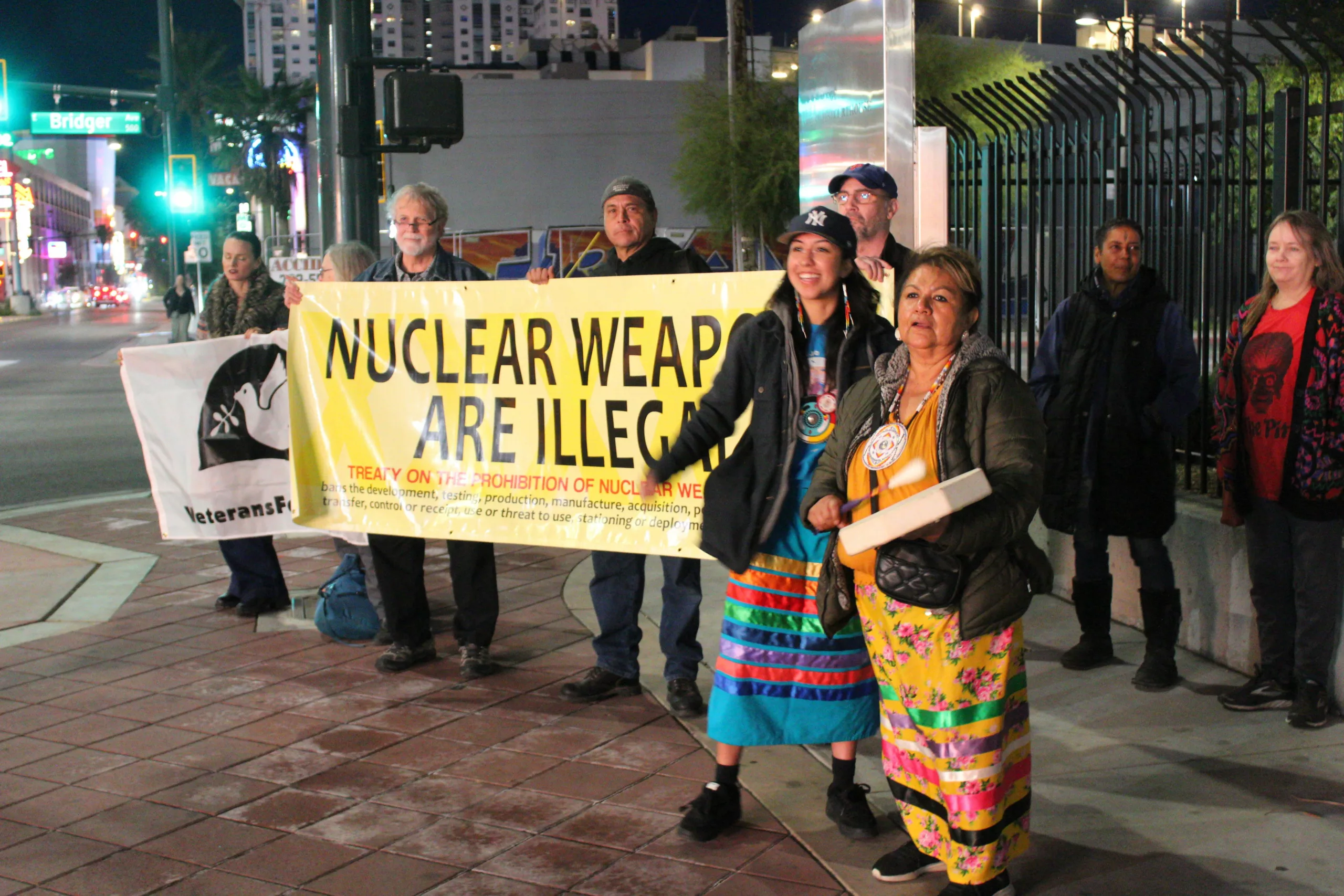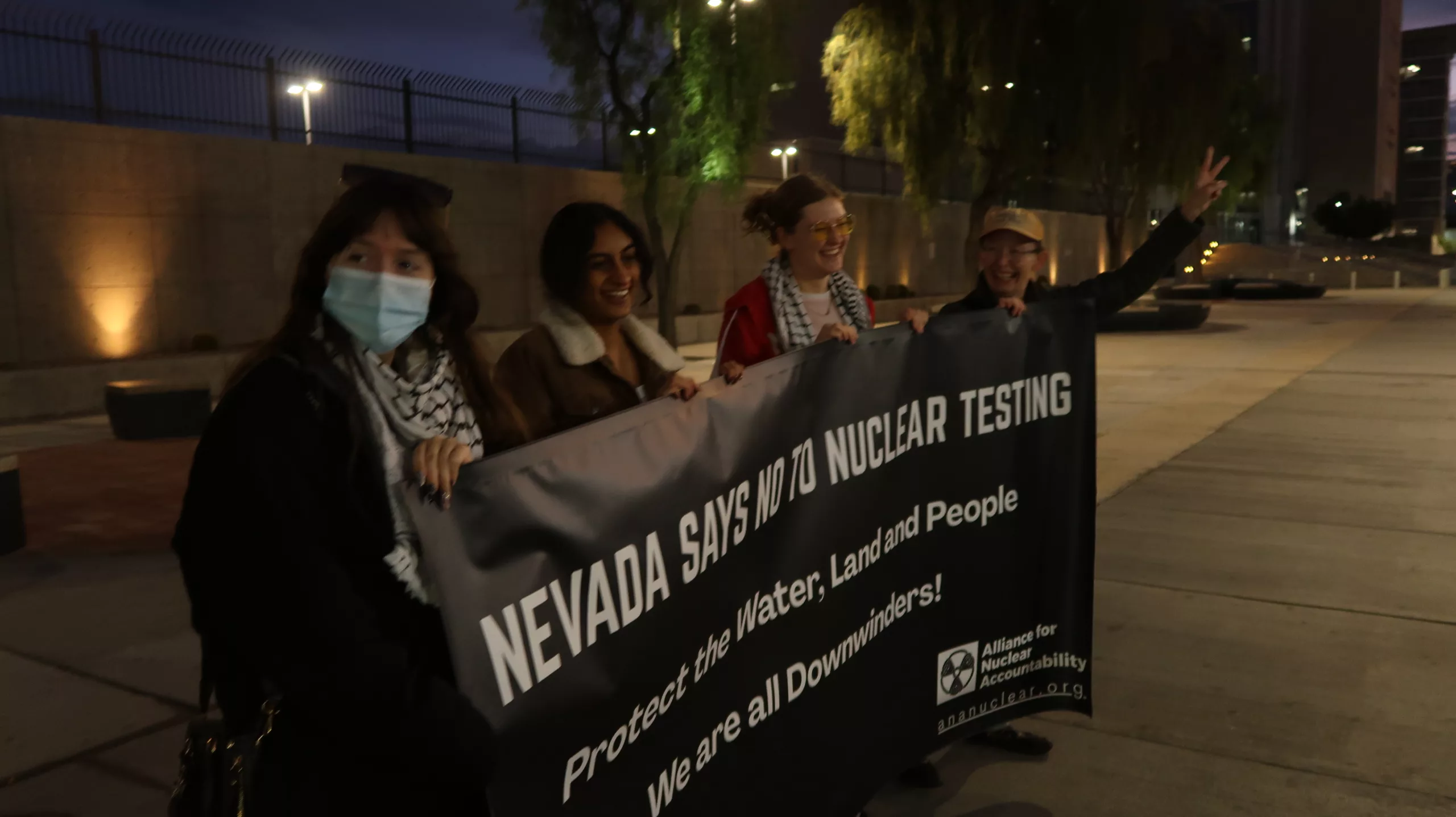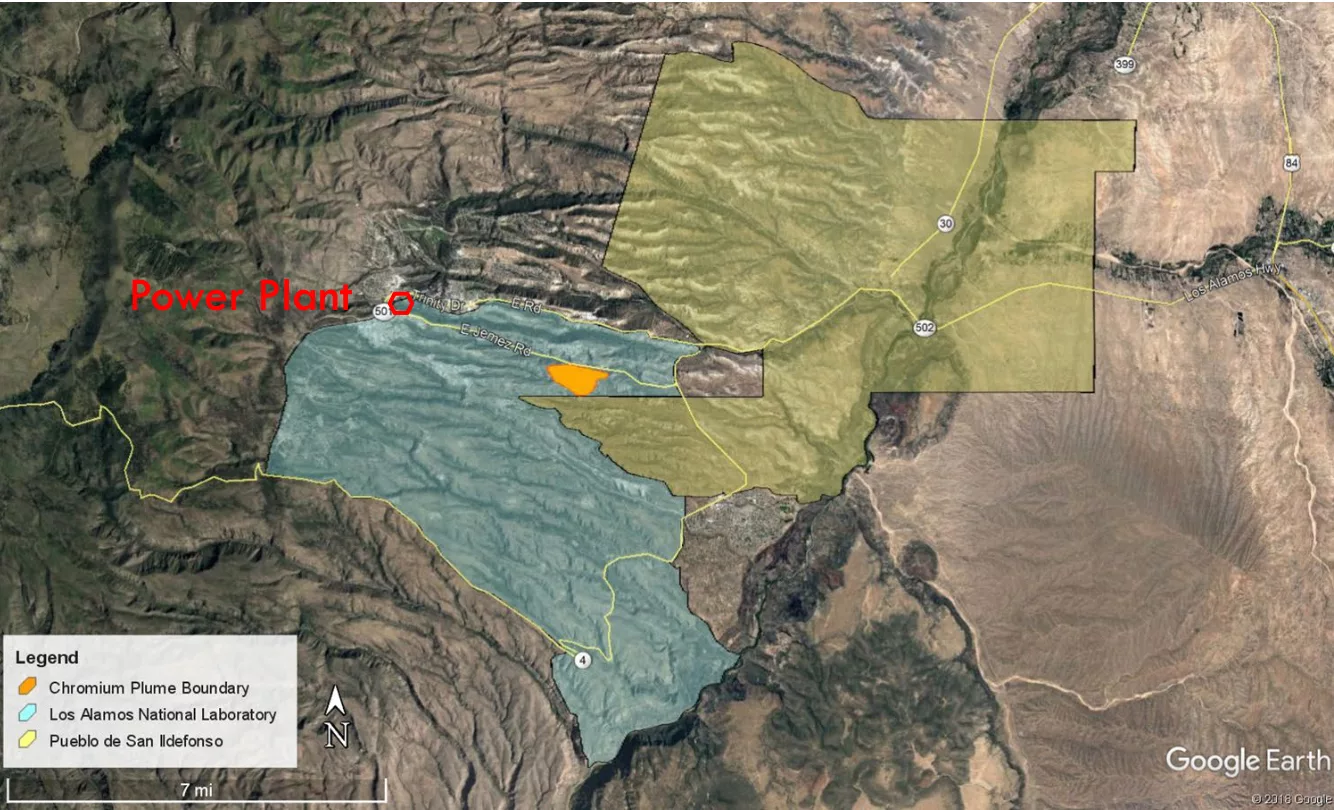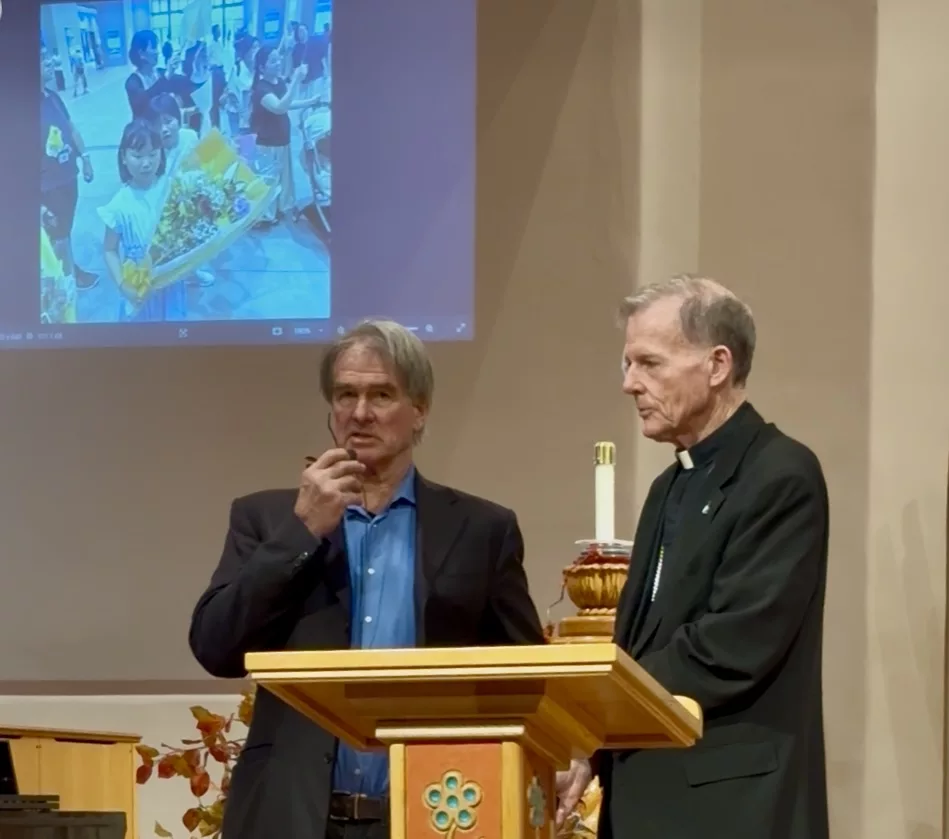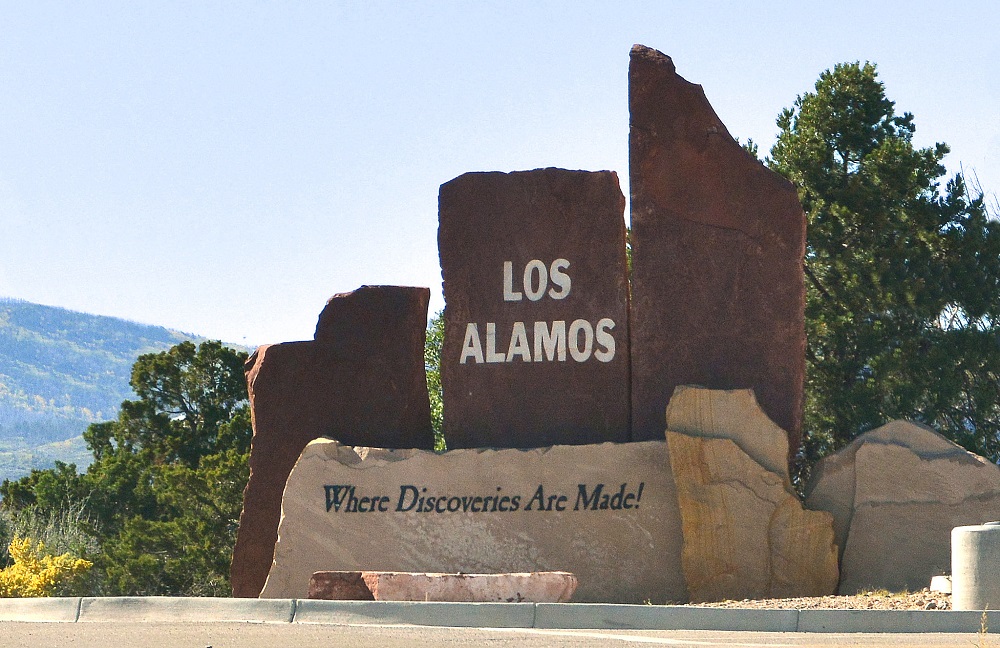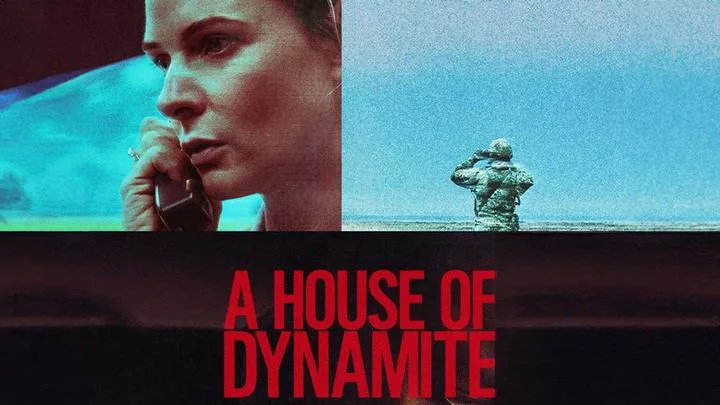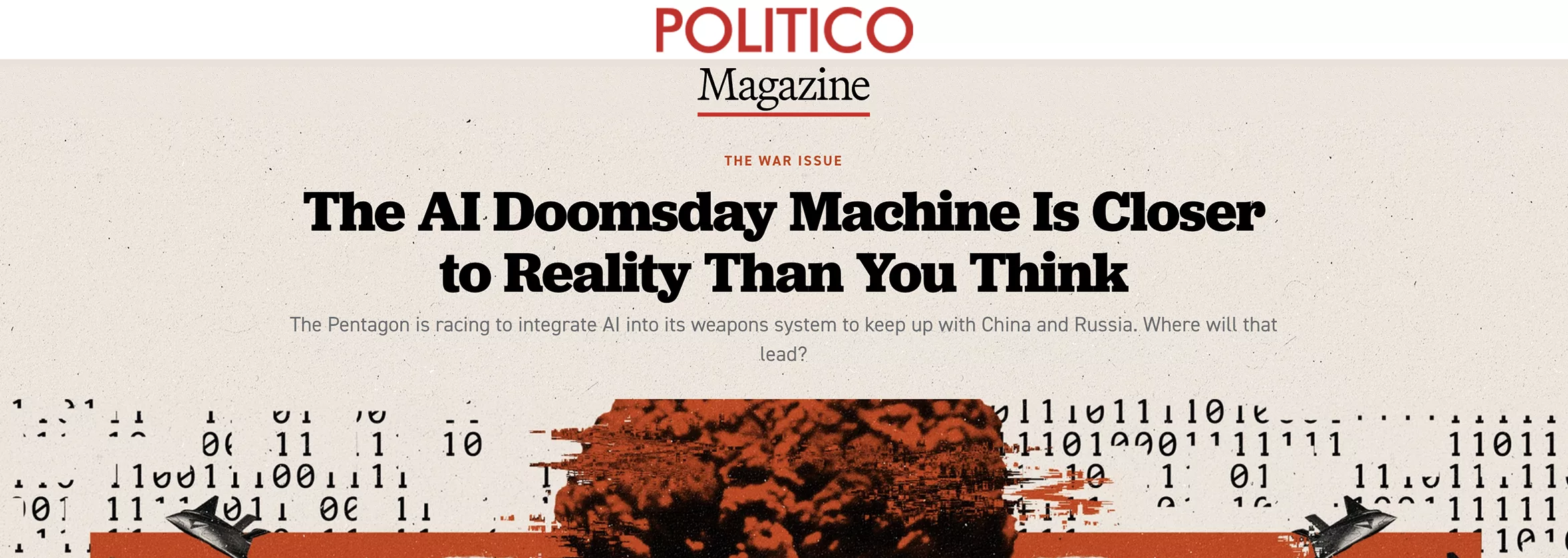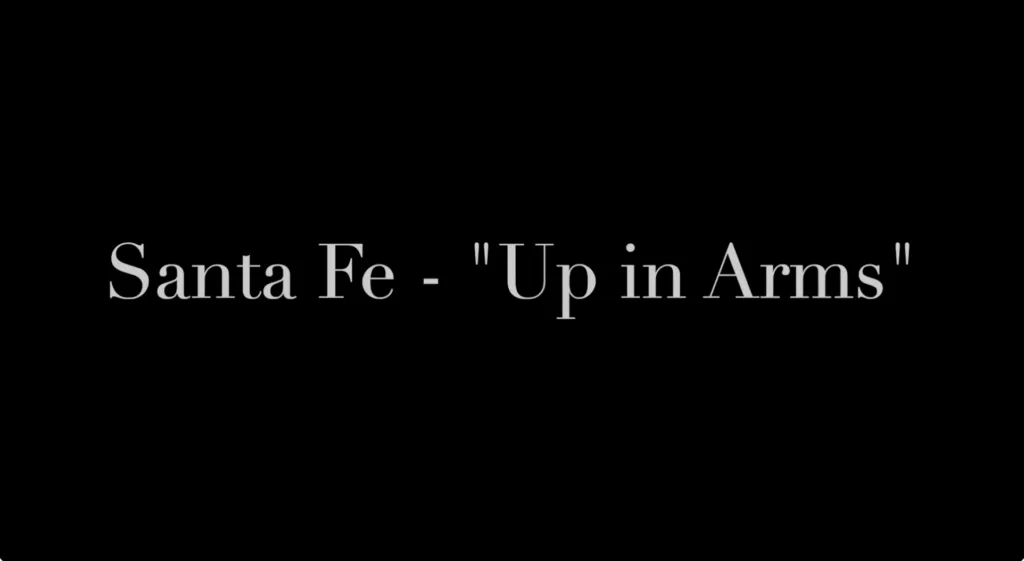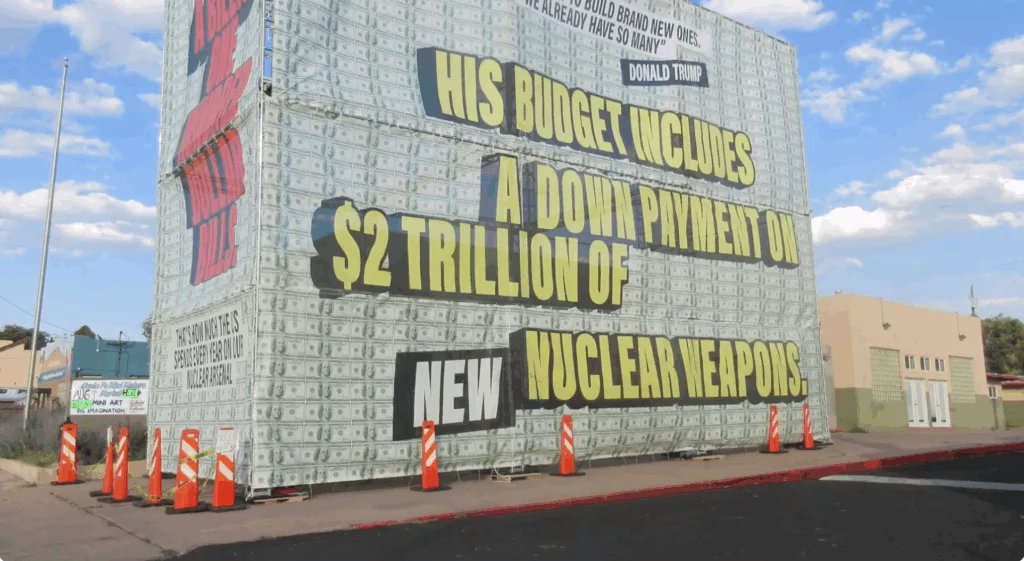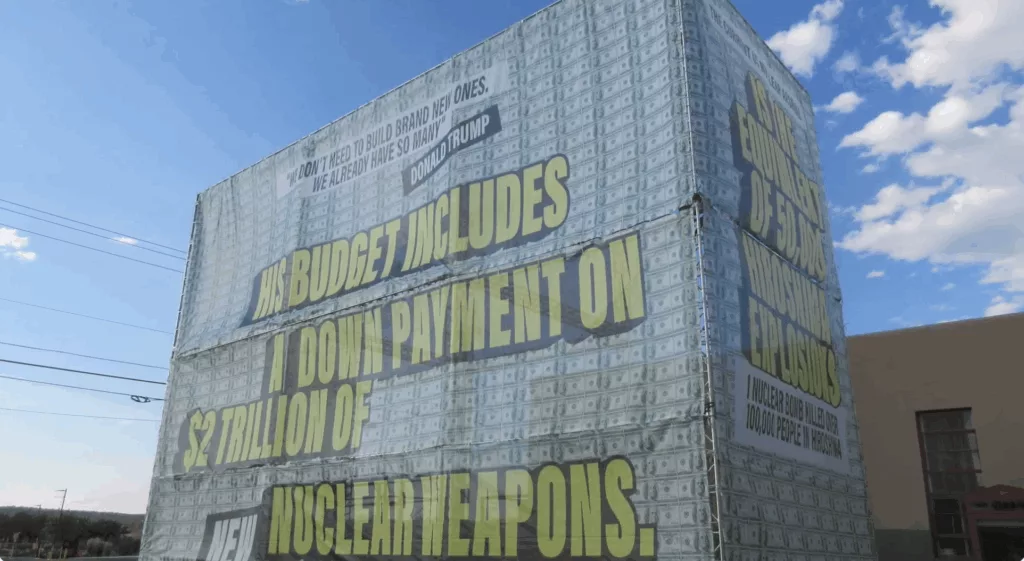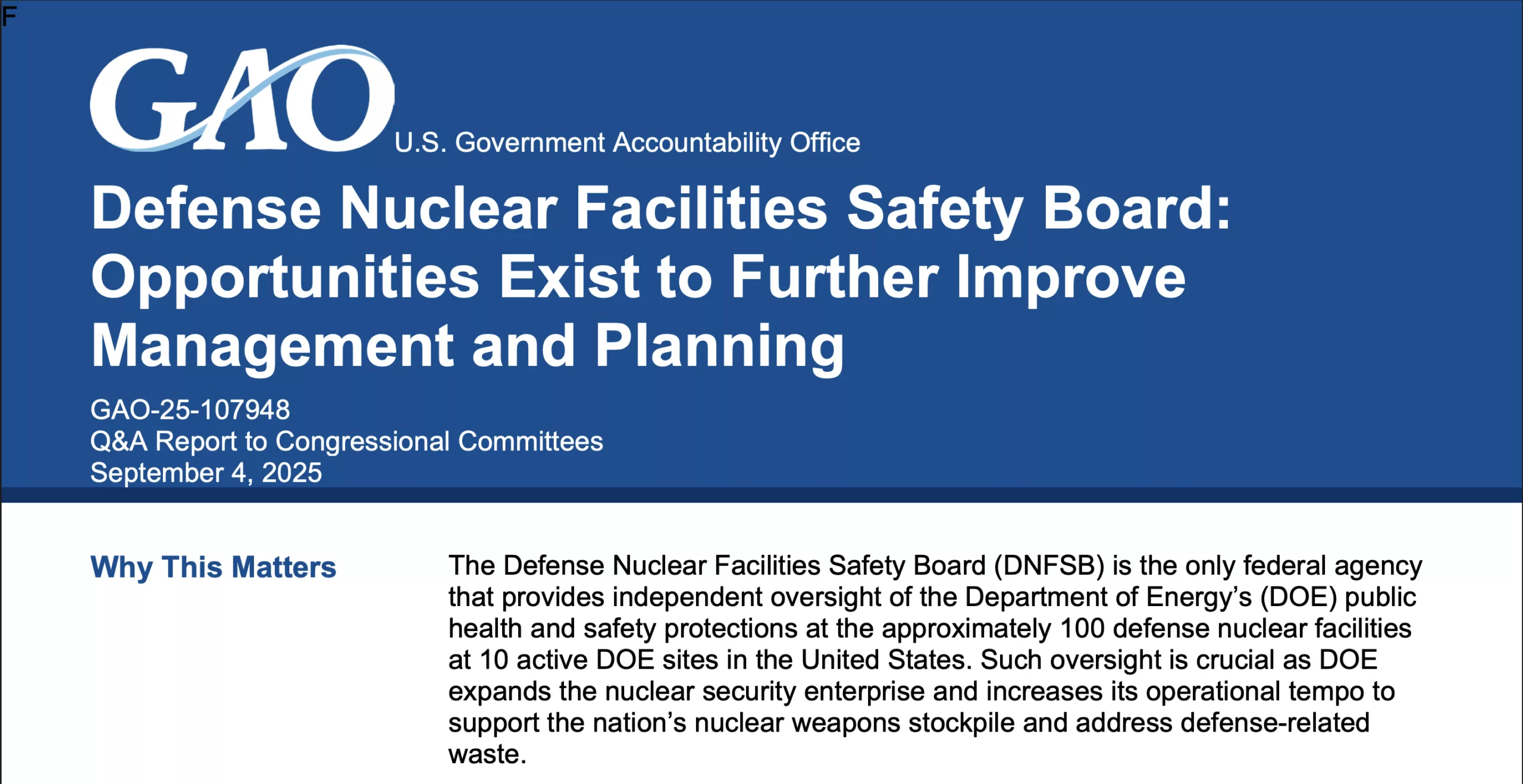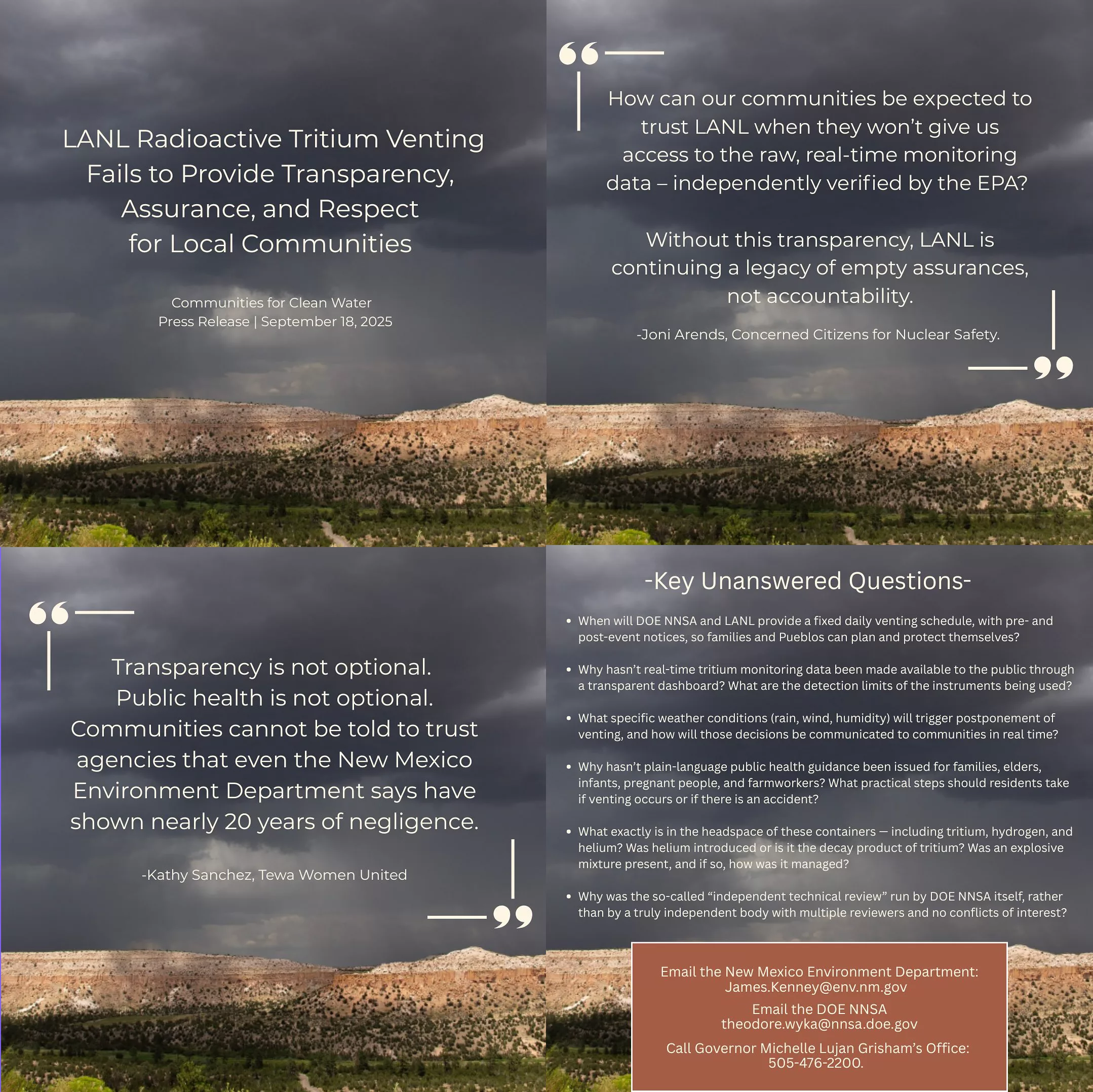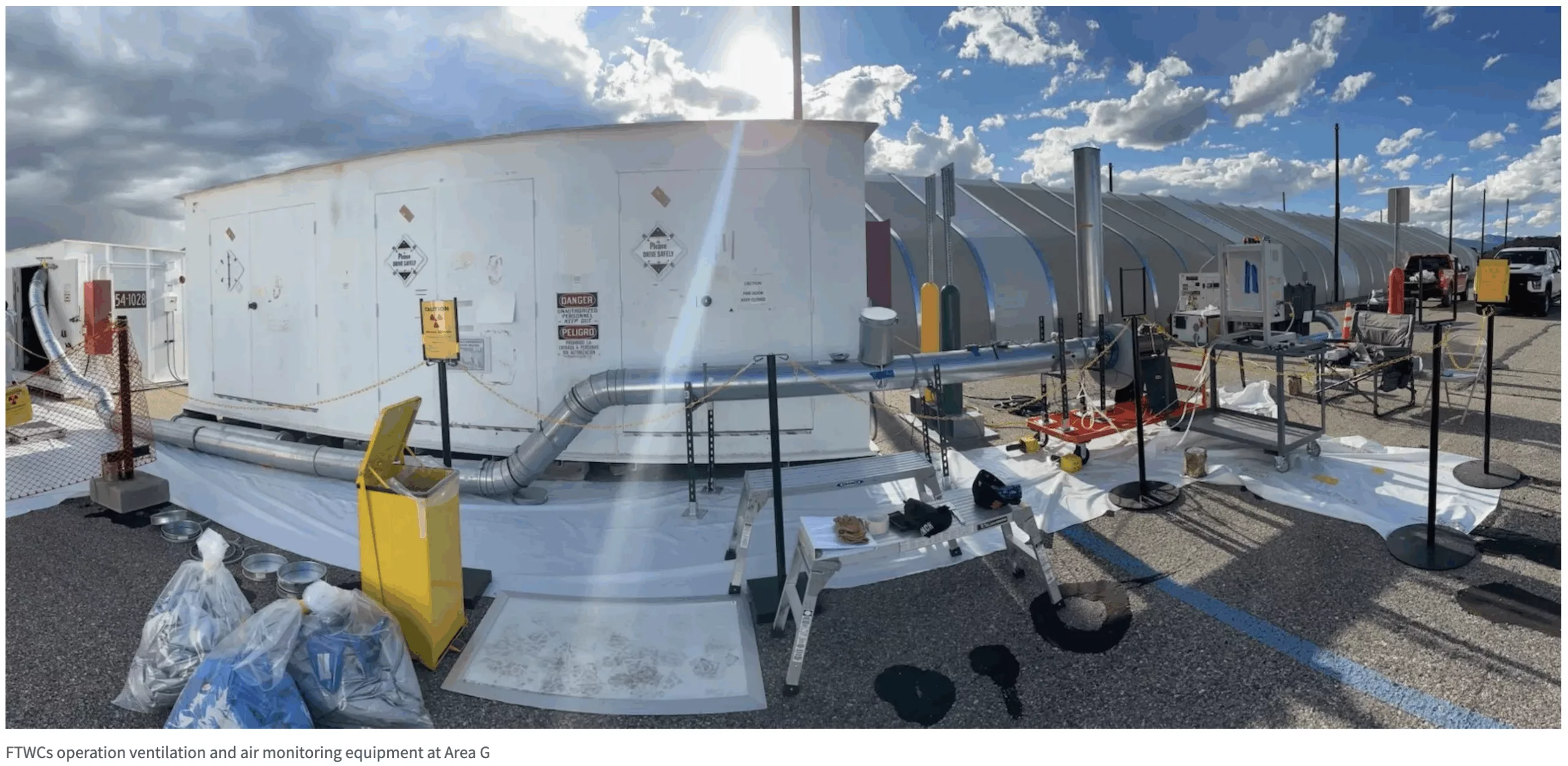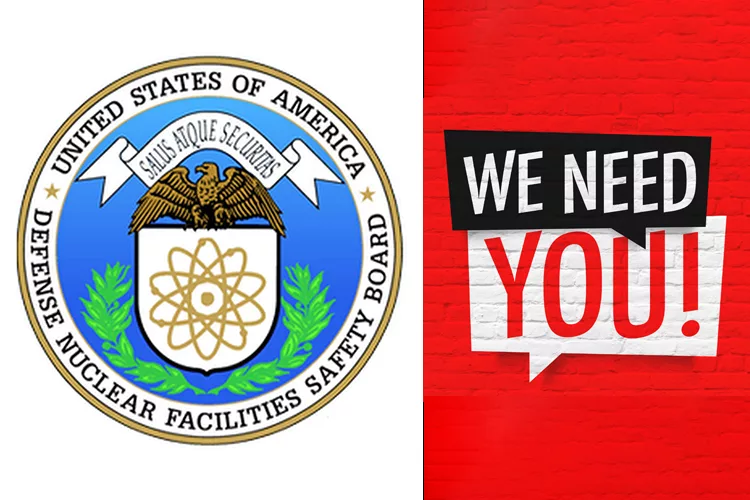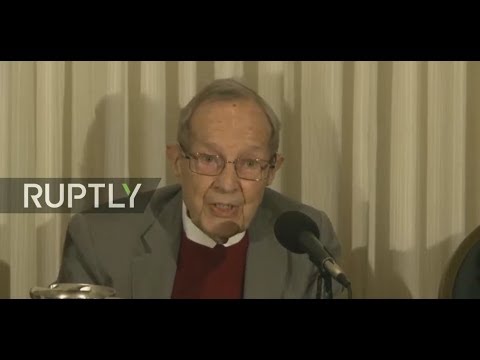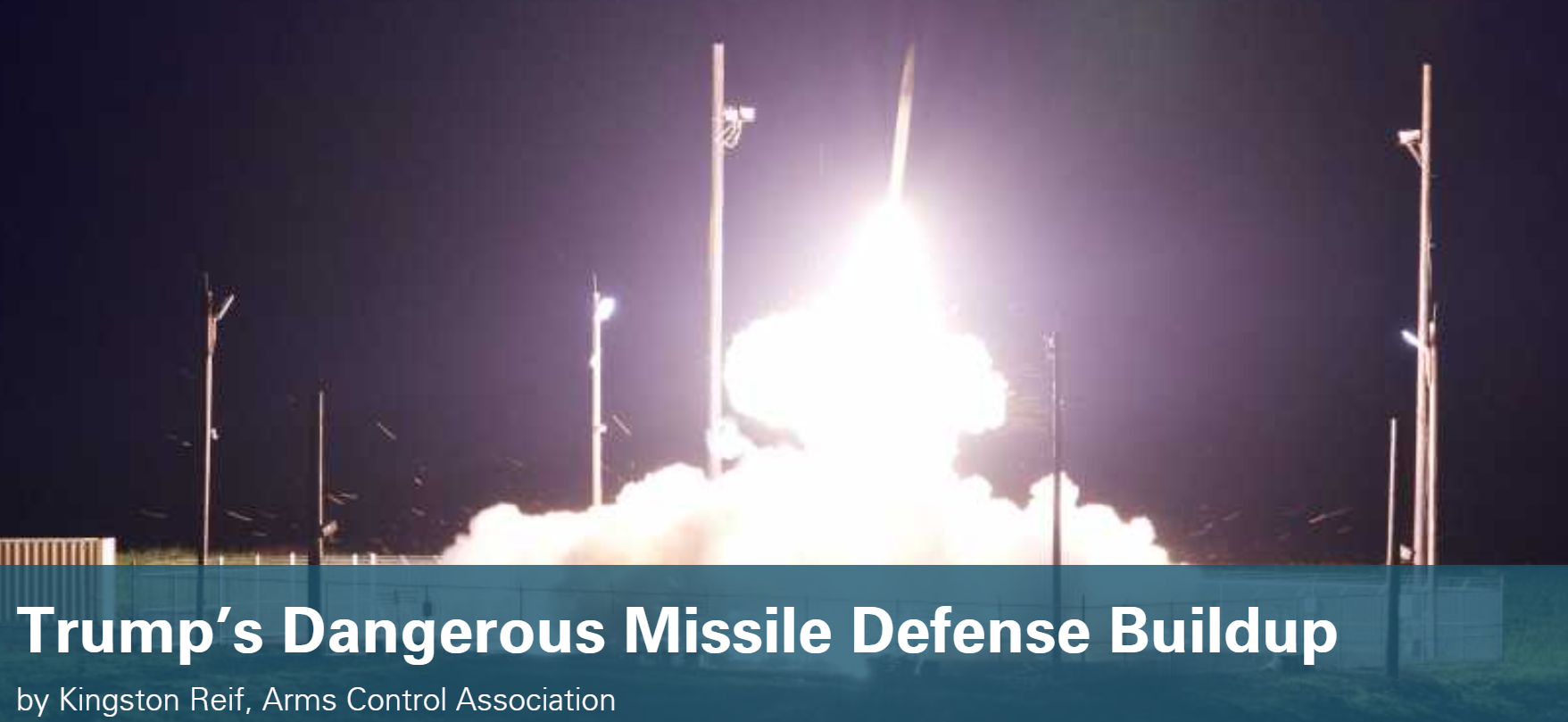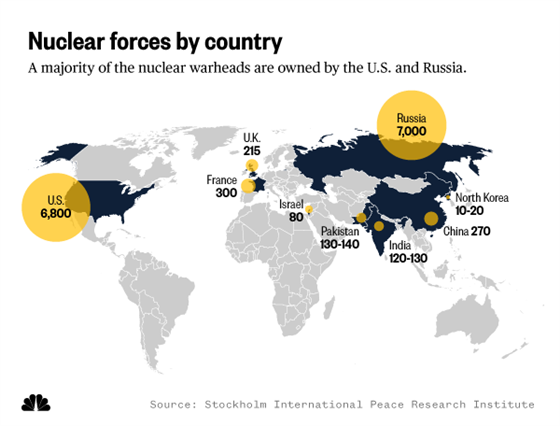New Air Force Chief Boosts Nuclear Buildup, Moving Away From Deterrence, Experts Warn
“Gen. Ken Wilsbach promotes nuclear “recapitalization” in his first memo to the Air Force — fueling fear of a radical shift away from nukes acting solely as deterrence.”
By: Austin Campbell, The Intercept | theintercept.com

“We will advocate relentlessly for programs like the F-47, Collaborative Combat Aircraft as well as nuclear force recapitalization through the Sentinel program and the B-21,” Wilsbach wrote in a memo dated November 3, referring to planned upgrades to nuclear missiles and stealth bombers.
Experts who spoke to The Intercept said the language signals a doctrinal pivot, prioritizing displays of strength and the buildup of nuclear weaponry over internal repair — an approach that may appeal politically to the Trump administration and Defense Secretary Pete Hegseth, but does little to ease the fatigue and distrust spreading among airmen.
…
The Sentinel program Wilsbach referenced is intended to modernize the land-based leg of the nuclear triad, with new missiles, hardened silos, and updated command-and-control infrastructure across missile fields in Wyoming, Montana, and North Dakota. It’s the Air Force’s planned replacement for aging Minuteman III intercontinental ballistic missile systems. The B-21 Raider is the next-generation stealth bomber designed to replace older strategic bombers like the B-2 and B-1, delivering both conventional and nuclear payloads.
Critics say framing these nuclear modernization efforts as “recapitalization” obscures the ethical and strategic implications of expanding U.S. nuclear capabilities amid declining morale and retention.
“You don’t ‘recapitalize’ genocidal weaponry.”
“The chief of staff’s emphasis on weaponry is disheartening. His description of nuclear weapon ‘recapitalization’ is an abomination of the English language. You don’t ‘recapitalize’ genocidal weaponry. Both the Sentinel missile program and the B-21 bomber are unnecessary systems that could cost as much as $500 billion over the next 20 years,” said William Astore, a retired Air Force lieutenant colonel and military historian.
Los Alamos National Lab (LANL) Town Hall December 3rd, 2025 – Thoughts from Nuclear Watch New Mexico:
The LANL Director mentioned Non-proliferation is a big part of their work. However, the Nuclear Nonproliferation program budget is a mere 6.5% of the total Lab budget (Nuclear Weapons is 84%, with a Billion dollar increase for FY26). https://nukewatch.org/wp-content/uploads/2025/09/FY26-Lab-Table-spreadsheets-Chart-1.pdf Nuclear Nonproliferation is a valuable program that LANL does well, and its funding should not be cut to provide more money for nuclear weapons production (literally the opposite of nonproliferation). The Nuclear Nonproliferation budget should be increased, especially if the Lab director agrees on its importance. NukeWatch NM is entirely supportive of LANL’s Sealed Sources program, which serves as the nation’s lead for collecting potentially dangerous radioactive materials that are no longer needed, securing them, and ensuring they don’t fall into the wrong hands, protecting communities and enhancing security.
On the discussion of AI missions at the lab:
The lab is partnering with NVIDIA for their hardware and ChatGPT/Open AI for their models. “The goal is to harness the power of the next evolution of high performance computing and apply it to our national security science and technology. Big development on this front is the “genesis” mission…” and in an answer to a question, want to “use artificial intelligence to [for example] help us develop the molecules that could deliver a therapeutic isotope to a cancer cell with high specificity so that when that undergoes radioactive decay the decay products basically kill the cancer cell but no surrounding tissue”
Again, the lab’s nuclear weapons budget ate up almost all else this year – how does the lab propose to work on this kind of work when its’ science budget is less than 1%? How will this advancement of AI be applied to our national security science and technology in terms of nuclear weapons? NukeWatch has serious concerns and questions regarding the tangible risks associated with integrating commercial AI infrastructure to be with active national security and nuclear defense programs. Beyond this, a $1.25 billion advanced computing campus is planned in Michigan to support far-away Los Alamos Lab in high-performance computing and AI research.
Continue reading
Nuclear Watch New Mexico Attends the Alliance for Nuclear Accountability Fall Meeting Nov. 21-23 in Las Vegas, Protesting Nuclear Testing in Nevada & Much More!
Sophie Stroud, Communications and Associate Director, represented NukeWatch at the Alliance for Nuclear Accountability's (ANA) fall meeting Nov. 21-23 in Las Vegas, hosted locally by Ian Zabarte, Principal Man of the Western Shoshone, Secretary of State of the Western Shoshone National Council, and Secretary of the Native Community Action Council (NCAC). The Nevada Test Site, now called the "Nevada National Security Site" and Yucca Mountain are both nuclear sites on Shoshone Land, and nuclear issues continue to threaten the Western Shoshone People. Yucca Mountain is Western Shoshone property with Constitutional protection, and the Department of Energy cannot prove ownership. ANA is a national network made up of 30 organizations whose members live near US nuclear bomb plants and their waste sites. The meeting was scheduled in coordination with the renowned International Uranium Film Festival — uraniumfilmfestival.org. As an organizer of the ANA Meeting as well as the International Uranium Film Festival, NCAC, composed of Shoshone and Paiute peoples, believe these films are a necessary part of the ongoing awareness, witness and resistance to nuclear war, human health and a livable Mother Earth. As 2025 marks the 80th anniversary of the first atomic bombings at the Trinity Site, Hiroshima, and Nagasaki, the world faces a new nuclear arms race that includes nuclear "modernization" of weapons, as well as the fast-tracking of uranium mining for nuclear-powered artificial intelligence data centers.
Friday morning, Nov. 21, the group traveled to the Mercury Exit gate of the Nevada Test Site with banners opposing nuclear weapons and nuclear testing. On October 29, before a meeting in South Korea with Chinese President Xi, President Donald Trump announced on social media that he “instructed the Department of War to start testing [U.S.] Nuclear Weapons on an equal basis” with Russia and China. The post contains various inaccuracies and ambiguity over whether he wants to resume underground nuclear explosive testing — an act the United States, Russia, and China have not undertaken in over 30 years — or continue testing of delivery systems.
Trump Orders Nuclear Weapons Testing for New Nuclear Arms Race
What might Project 2025 mean for N.M.? Non-nuclear cuts at national labs (Updated Dec 1, 2025)
“[The Heritage Foundation’s Project 2025] contemplates pulling funding from any work unrelated to nuclear weapons at Los Alamos National Laboratory, Sandia National Laboratories and sister facility Lawrence Livermore National Laboratory in California…in New Mexico, some say cutting the labs’ other scientific work would have a devastating economic effect on the state and could ultimately weaken the institutions as a whole.”
“It doesn’t take a nuclear physicist to realize that there could be massive layoffs if this proposal or these ideas were to reach fruition,” said Chandler, who worked in the employment arena for much of her time at the facility. “Now, that might expand the nuclear weapons program to some degree, but it’s not going to absorb the entire workforce.”
“Under the Biden administration, LANL has seen a massive growth in employment as the laboratory ramps up for its production of plutonium pits, the cores of nuclear bombs.”
By Gabrielle Porter and Alaina Mencinger gporter@sfnewmexican.com amencinger@sfnewmexican.com | Updated santafenewmexican.com
Project 2025 — the now-infamous blueprint for a conservative presidency that’s still publicly being held at arm’s length by Republican presidential candidate Donald Trump — proposes all sorts of sweeping policy recommendations, from promoting capital punishment to embracing mass deportations.
But tucked in the 922 pages of its report, “Mandate for Leadership 2025: The Conservative Promise,” is one recommendation that centers squarely on New Mexico.
Trump talk on nuke testing turns focus to New Mexico’s role in decades of blasts
Jay Coghlan, executive director of the nuclear watchdog group Nuclear Watch New Mexico, said Wright’s comments “somewhat” quelled his initial concerns about a renewed explosive nuclear testing program.
But he said claims Russia and China may be conducting small-scale tests known as hydronuclear tests — banned by the Comprehensive Nuclear Test Ban Treaty, of which the United States, Russia and China are all signatories — continue to give him pause. He fears rumors about the low-yield tests in other nations could be used to justify a domestic return to testing.
“That, in effect, would give permission to the U.S. [to resume testing],” Coghlan said. “But that would be in violation of the norm of the CTBT.”
Three decades removed from the United States’ last nuclear test, a testing regimen would likely be expensive and time-consuming to start up, Coghlan argued, and could prompt other nuclear powers to follow suit.
It seems likely Russia, at least, would: Following Trump’s post, Russian President Vladimir Putin announced if the United States resumed explosive nuclear testing, the Eastern European nation would follow.
“Then everybody else is going to do it, or virtually everybody else will do it, every other nuclear weapons power,” Coghlan said. “I could just see India and Pakistan champing at the bit to test. And then, of course, there’s North Korea and China.”
By Alaina Mencinger amencinger@sfnewmexican.com | November 30, 2025 santafenewmexican.com
It might not have as reverent a name as the Trinity Test or a litany of films made about it. But Project Gnome, a 1961 explosive nuclear test conducted near Carlsbad, is a relic of a bygone era in New Mexico and beyond.
In the 47 years between the Trinity Test and the end of the United States’ explosive nuclear testing in 1992, the nation would perform more than 1,000 such tests — more than any other nuclear nation — with most conducted in Nevada.
New Mexico might not have been the center of the nation’s testing efforts post-Trinity, which marked its 80th anniversary this year, but the state still played a role: Researchers from Sandia National Laboratories and Los Alamos National Laboratory helped design and conduct testing elsewhere, including at the Nevada Test Site and in the Marshall Islands.
Most Democrats and one-third of Republicans think it’s likely the U.S. will get into a nuclear war in the next decade
A new YouGov poll on nuclear weapons finds that nearly half of Americans believe it’s likely the U.S. will get into a nuclear war in the coming decade, and most are worried about personally experiencing a nuclear war. A majority believe nuclear weapons are making the world less safe, but opinions are mixed on whether the U.S. should dismantle all of its nuclear weapons.
By: Jamie Ballard| November 26, 2025 today.yougov.com
46% of Americans think it’s likely the U.S. will get into a nuclear war within the next 10 years; 37% think this is not very or not at all likely. 57% of Democrats and 37% of Republicans think this is likely.
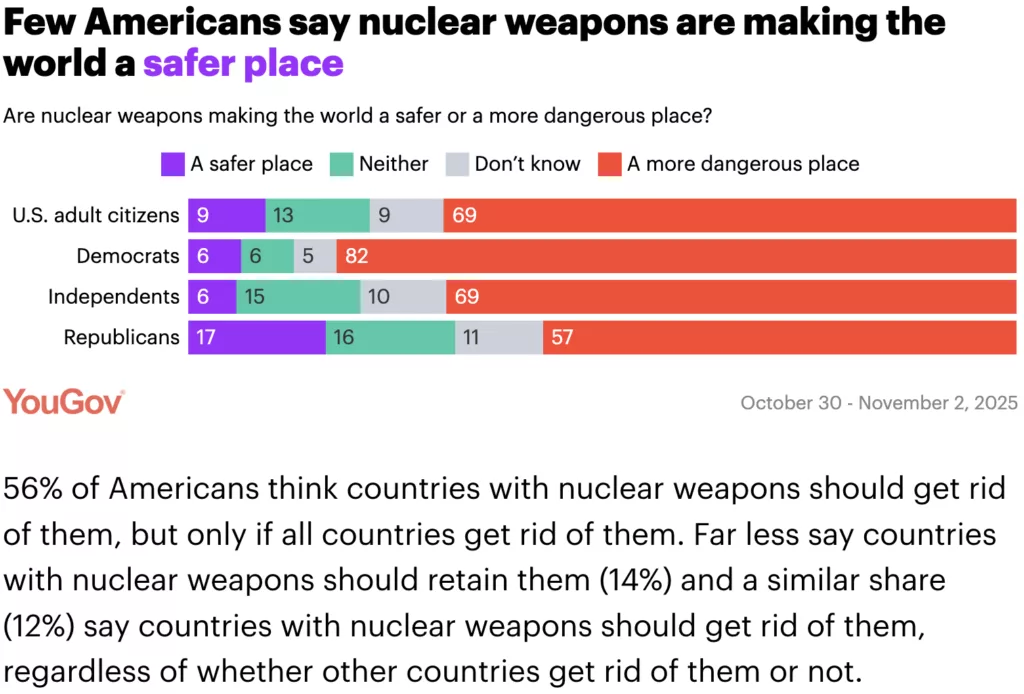
Department of Energy Seeks to Eliminate Radiation Protections Requiring Controls “As Low As Reasonably Achievable”
An internal Department of Energy (DOE) memorandum eliminates worker and public radiation protection rules known “As Low As Reasonably Achievable” (ALARA). This fundamental departure from decades of accepted health physics practices is being promoted by senior DOE political appointees with little background in health or radiation control. It is marked as “URGENCY: High” under the auspices of the DOE Deputy Secretary, the Under Secretary for Science, and the Administrator of the National Nuclear Security Administration. The memorandum awaits the final signature of DOE Secretary Chris Wright.
The memo’s stated goal is to:
“…remove the ALARA principle from all DOE directives and regulations, including DOE Order 458.1, Radiation Protection of the Public and the Environment, NE [Office of Nuclear Energy] Order 458.1, Radiation Protection of the Public, and, upon completion of the rulemaking process, 10 CFR [Code of Federal Regulations] 835, Occupational Radiation Protection.” [1]
It follows the playbook of the Heritage Foundation’s Project 2025, which called for:
“Set[ting] clear radiation exposure and protection standards by eliminating ALARA (“as low as reasonably achievable”) as a regulatory principle and setting clear standards according to radiological risk and dose rather than arbitrary objectives.” [2]
Lab Chromium Contamination Confirmed on San Ildefonso Pueblo Land
Comprehensive Cleanup Needed Instead of More Nuclear Weapons
The New Mexico Environment Department has announced:
“A toxic chromium plume from Los Alamos National Laboratory has spread beyond Lab boundaries onto Pueblo de San Ildefonso land for the first time, with contamination exceeding state groundwater standards… These new results are conclusive evidence that the U.S. Department of Energy’s efforts to contain the chromium plume have been inadequate.”
In reality, chromium groundwater contamination probably migrated beyond the LANL/San Ildefonso Pueblo boundary long ago, with past Lab maps of the plume “magically’ stopping at the border. In the past, tribal leadership has commented that it was fortunate that the contamination stopped there, but that any future indications of groundwater contamination on Pueblo land could have serious consequences. The San Ildefonso Pueblo is a sovereign Native American tribal government.
As late as the late 1990s the Lab was falsely claiming that groundwater contamination was impossible because underlying volcanic tuff is “impermeable.” [1] This ignored the obvious fact that the Parajito Plateau is heavily seismically fractured, providing ready pathways for contaminant migration to deep groundwater. By 2005 even LANL acknowledged that continuing increasing contamination of the regional aquifer is inevitable.[2] Some 300,000 northern New Mexicans rely upon the aquifer for safe drinking water. The potential serious human health effects (including cancer) caused by chromium contamination was the subject of the popular movie Erin Brockovich.
LANL chromium plume spreads onto San Ildefonso Pueblo land, NMED says
Nuclear Watch New Mexico executive direcor Jay Coghlan sees PF-4 as being a bigger scale — and having bigger risks — than the other aging buildings.
“PF-4 is not unique in being old,” Coghlan said. “However, PF-4 is totally unique in currently being the only facility that can process large amounts of plutonium … particularly including plutonium pit production. I think, in part, that’s why the Safety Board focuses more on PF-4 than, to my knowledge, than any other single individual facility.”
By:Patrick Lohmann | November 13, 2025 sourcenm.com
An underground plume of toxic chromium has spread from Los Alamos National Laboratory to Pueblo de San Ildefonso land, state Environment Department officials announced Thursday.
The discovery marks the first time the plume has been detected within the pueblo boundaries, officials said in a news release, though they added the plume’s spread does not pose imminent threats to drinking water in the pueblo or in Los Alamos County. That’s because the plume is not near any known private or public wells, officials said.
Long-term ingestion of hexavalant chromium can cause serious health problems or increase risk of certain cancers.
US Stands Alone Defying UN Vote on Nuclear Test Ban Treaty
Could the LDS Church end an ongoing nuclear weapons project? These veteran activists think so.
By Thalif Deen, Inter Press Sevice | November 12, 2025 ipsnews.net
UNITED NATIONS, Nov 12 2025 (IPS) – The US took another step backward –to break ranks with the United Nations– when it voted against a draft resolution calling for the entry into force of the Comprehensive Nuclear-Test-Ban Treaty (CTBT).
The negative vote followed an announcement by President Trump last month that the US plans to resume nuclear testing after a 33-year hiatus. The US stood alone on the UN vote, which was supported by almost all member States in the General Assembly’s First Committee.
The resolution was adopted by an overwhelming majority: with 168 votes in favor, with one against (United States) and 3 abstentions (India, Mauritius, Syria).
During Trump’s first term, the US abstained on the vote. And in other years they had been voting in favour.
Jackie Cabasso, Executive Director, Western States Legal Foundation, which monitors and analyzes U.S. nuclear weapons programs and policies, told IPS the chaos and uncertainty arose from Trump’s factually-challenged social media post that “because of other countries testing programs, I have instructed the Department of War to start testing our Nuclear Weapons on an equal basis.”
The U.S. government’s first ever “No” vote, on the annual UN resolution in support of the Comprehensive Test Ban Treaty (CTBT), raises further troubling questions about U.S. intentions.
Harking to the MX, Utahns call on LDS Church President Oaks to speak out against nuclear missile being developed in Utah
Could the LDS Church end an ongoing nuclear weapons project? These veteran activists think so.
THE SALT LAKE TRIBUNE | November 9, 2025 sltrib.com
Decades ago, peace activists helped keep a major nuclear weapons system out of Utah with help from key figures, chiefly Spencer W. Kimball, then the president of The Church of Jesus Christ of Latter-day Saints.
Now some of those same individuals are calling on the church’s newly ascended president, Dallin H. Oaks, to follow in his predecessor’s footsteps and speak out against the federal government’s development of a new generation of nuclear missile, known as Sentinel, partly in the Beehive State.
“The arms race continues,” the group of 12 Utahns and one former resident write in a letter mailed to church headquarters in early October, “and a new moral challenge faces” the leaders of the Utah-based faith.
Nuclear Weapons Issues & The Accelerating Arms Race: November 2025
Nuclear weapons:
The government shutdown has impact:
National Nuclear Security Agency confirms 152 furloughed at offices in Albuquerque, Los Alamos
Only 14 employees remain at the two sites By: Danielle Prokop-October 22, 2025
The NNSA confirmed 152 New Mexico employees charged with overseeing national laboratories’ nuclear weapons work were furloughed on Oct. 20, 2025. (Courtesy of NNSA)
The federal government this week sent home more than 150 federal New Mexico employees charged with overseeing national laboratories’ nuclear weapons work, with only 14 employees across two sites remaining at work, the National Nuclear Security Agency confirmed to Source NM.
The furloughs include 71 employees at NNSA’s Los Alamos field office and 81 at the Sandia National Laboratories location, NNSA Deputy Director of Communications Laynee Buckels told Source NM in an email. Seven employees remain at each site, working without pay, she said.
The field offices are responsible for “ensuring compliance with federal contracts to manage and operate the national security assets,” according to the NNSA website
To date there doesn’t appear to be furloughs at LANL, whose employees technically work for a contractor rather than the federal government. Congress is not furloughed, but Speaker Mike Johnson has kept the House out of session. As a result, legislation has come to a screeching halt.
Los Alamos’ plutonium facility safety systems need improvement, oversight board says
Nuclear Watch New Mexico executive direcor Jay Coghlan sees PF-4 as being a bigger scale — and having bigger risks — than the other aging buildings.
“PF-4 is not unique in being old,” Coghlan said. “However, PF-4 is totally unique in currently being the only facility that can process large amounts of plutonium … particularly including plutonium pit production. I think, in part, that’s why the Safety Board focuses more on PF-4 than, to my knowledge, than any other single individual facility.”
By Alaina Mencinger amencinger@sfnewmexican.com | November 7, 2025 santafenewmexican.com
An independent oversight agency wants to see improved safety systems at the facility at the heart of Los Alamos National Laboratory’s plutonium pit mission: PF-4.
The Defense Nuclear Facilities Safety Board reported what it believes to be gaps in a safety analysis drafted for PF-4 and delays in upgrades to safety systems in a letter last month to Energy Secretary Chris Wright.
“Maintaining momentum for these safety infrastructure projects is more important in light of the issues with the safety analysis,” the board wrote in the letter dated Oct. 10. It was signed by former acting chairman Thomas Summers.
LANL Prioritizes Plutonium “Pit” Bomb Core Production Over Safety
The independent Defense Nuclear Facilities Safety Board recently released its Review of the Los Alamos Plutonium Facility Documented Safety Analysis. It concluded that:
“While LANL facility personnel continue to make important upgrades to the Plutonium Facility’s safety systems, many of those projects have encountered delays due to inconsistent funding and other reasons. DOE and LANL should consider prioritizing safety-related infrastructure projects to ensure that the Plutonium Facility safety strategy adequately protects the public, as the facility takes on new and expansive national security missions.” (Page 24)
In early October 2024, the Department of Energy’s semi-autonomous National Nuclear Security Administration (NNSA) announced with great fanfare that the Los Alamos Lab had produced its first “diamond stamped” plutonium pit for the nuclear weapons stockpile. Tens of billions of taxpayers’ dollars have been sunk into LANL’s long delayed and over budget pit production program. Given no further announcements, it is not currently known whether or not the Lab is meeting its congressionally required production goals. Endemic nuclear safety problems have long been an intractable issue, at one point even forcing a three-year halt to plutonium operations at LANL’s Plutonium Facility-4 (“PF-4”).
In its recent Review, the Safety Board reported:
“The [2009] Plutonium Facility safety basis described very large potential [radioactive] dose consequences to the public following seismic events…. DOE committed to upgrade and seismically qualify the ventilation system, with a particular focus on a specific ventilation subsystem…”
“As the only facility in the DOE complex that can process large quantities of plutonium in many forms, [PF-4] represents a unique capability for the nation’s nuclear deterrent. The Board has long advocated for the use of safety-related active confinement systems in nuclear facilities for the purposes of confining radioactive materials…Passive confinement systems are not necessarily capable of containing hazardous materials with confidence because they allow a quantity of unfiltered air contaminated with radioactive material to be released from an operating nuclear facility following certain accident scenarios. Safety related active confinement ventilation systems will continue to function during an accident, thereby ensuring that radioactive material is captured by filters before it can be released into the environment… (Page 2, bolded emphases added)
AP: Trump appears to suggest the US will resume testing nuclear weapons for first time in 30 years
“For Trump, who has cast Russia as a “paper tiger” for failing to swiftly subdue Ukraine, the message is that Russia remains a global military competitor, especially on nuclear weapons, and that Moscow’s overtures on nuclear arms control should be acted on.”
By MICHELLE L. PRICE and CHRIS MEGERIAN | October 30, 2025 apnews.com
BUSAN, South Korea (AP) — President Donald Trump appeared to suggest the U.S. will resume testing nuclear weapons for the first time in three decades, saying it would be on an “equal basis” with Russia and China.
The Kremlin pointed out that a global ban on nuclear tests has remained in place, but warned that if any country resumes nuclear testing Russia would follow suit.
There was no indication the U.S. would start detonating warheads, but Trump offered few details about what seemed to be a significant shift in U.S. policy.
He made the announcement on social media minutes before he met with Chinese leader Xi Jinping on Thursday in South Korea. He offered little clarity when he spoke to reporters later aboard Air Force One as he flew back to Washington.
The U.S. military already regularly tests its missiles that are capable of delivering a nuclear warhead, but it has not detonated the weapons since 1992. The Comprehensive Nuclear Test Ban Treaty, which the U.S. signed but did not ratify, has been observed since its adoption by all countries possessing nuclear weapons, North Korea being the only exception.
REUTERS: Trump tells Pentagon to immediately resume testing US nuclear weapons
“Russia – which tested a new nuclear-powered cruise missile on October 21, held nuclear readiness drills on October 22 and tested a new nuclear-powered autonomous torpedo on October 28 – said it hoped Trump had been properly informed that Moscow had not tested a nuclear weapon itself.”
By Trevor Hunnicutt, Ismail Shakil and Kanishka Singh | October 30, 2025 reuters.com
VIEW THE RECORDING: Santa Fe Ecumenical Conversations Towards Nuclear Disarmament at Santa Maria de la Paz Catholic Community – Monday, October 27
Archbishop John C. Wester and NukeWatch New Mexico presented a special evening at Santa Maria de la Paz Catholic Community on Monday, October 27, from 6:00 to 8:00 p.m. MT. Following a presentation from NukeWatch executive director Jay Coghlan on U.S. nuclear weapons “modernization,” the Archbishop shared reflections from his pastoral letter, Living in the Light of Christ’s Peace, and speak about the importance of dialogue and hope in working toward nuclear disarmament.
View the recording at https://www.youtube.com/watch?v=9LFmQzMoJds&t=1s
Trump Orders Nuclear Weapons Testing for New Nuclear Arms Race
New Plutonium “Pit” Bomb Cores at Los Alamos Lab Could Make It Real
Just minutes before meeting with Chinese President Xi Jinping, Trump posted on his Truth Social media platform that “Because of other countries testing programs, I have instructed the Department of War to start testing our Nuclear Weapons on an equal basis. That process will begin immediately.” House Speaker Mike Johnson soon followed on CNN saying, “I think it is an obvious and logical thing to ensure that our weapons systems work.”
No other countries are currently testing nuclear weapons (the last was by North Korea in 2017). Further, any nuclear weapons tests by the U.S. would be performed by the Department of Energy (whose last test was in 1992), not the Department of War (until recently the Department of Defense). Trump was likely referring to Vladimir Putin’s recent claims of a new nuclear powered cruise missile and a tsunami-causing nuclear-armed torpedo that could threaten America’s coastal cities. In addition, China is dramatically expanding its own fleet of intercontinental ballistic missiles.
But central to all this is the U.S.’ own $2 trillion “modernization” program that will rebuild every nuclear warhead in the planned stockpile with new military capabilities and produce new-design nuclear weapons as well. This so-called modernization program will also build new nuclear weapons production facilities expected to be operational until ~2080, and buy new missiles, subs, and bombers from the usual rich defense contractors, all to keep nuclear weapons forever.
‘Nuclear weapons are blasphemous’: Archbishop Wester continues disarmament push with talk
This event was organized by the “Santa Fe Ecumenical Conversations Towards Nuclear Disarmament” group at the Santa Maria de la Paz parish near the Santa Fe Community College. They kindly invited NukeWatch to speak before Archbishop Wester for what turned out to be a wonderful event. The full recording can be viewed at https://www.youtube.com/@SMDLP/streams
By Cormac Dodd cdodd@sfnewmexican.com | October 28, 2025 santafenewmexican.com
Despite saying he has received a somewhat muted response from the local faithful, Santa Fe’s Catholic archbishop is still pushing nuclear disarmament as vital to humanity’s spiritual well-being and continued existence.
“I think nuclear weapons are blasphemous, because I think nuclear weapons are humanity’s attempt to build a Tower of Babel, an attempt to eat from the apple of the tree of the Garden of Eden, to become like God, to become gods,” Archbishop John C. Wester said in a roughly 30-minute address at Santa Maria de la Paz Catholic Church south of Santa Fe.
“In humility, we must avoid inventing anything that, in a matter of hours, can destroy what God has created,” the leader of the Archdiocese of Santa Fe continued. “The story of Adam and Eve is archetypal, I think: When human beings try to become as God, they lose the Garden of Eden and they must endure the cruel reality of paradise lost.”
The archbishop’s comments followed a journey he undertook to Japan on the 80th anniversary of the U.S. military’s decision to drop atomic bombs on Hiroshima and Nagasaki toward the end of World War II. He spoke in front of an audience of about 50 people — who gave Wester a standing ovation — at Monday’s event
In a Looming Nuclear Arms Race, Aging Los Alamos Faces a Major Test
The lab where Oppenheimer developed the atomic bomb is the linchpin in the United States’ effort to modernize its nuclear weapons. Yet the site has contended with contamination incidents, work disruptions and old infrastructure.
By Alicia Inez Guzmán | October 28, 2025 The New York Times nytimes.com
In a sprawling building atop a mesa in New Mexico, workers labor around the clock to fulfill a vital mission: producing America’s nuclear bomb cores.
The effort is uniquely challenging. Technicians at Los Alamos National Laboratory must handle hazardous plutonium to create the grapefruit-size cores, known as pits. They do so in a nearly 50-year-old building under renovation to address aging infrastructure and equipment breakdowns that have at times disrupted operations or spread radioactive contamination, The New York Times found.
Now, the laboratory is under increasing pressure to meet the federal government’s ambitions to upgrade the nation’s nuclear arsenal. The $1.7 trillion project includes everything from revitalizing missile silos burrowed deep in five states, to producing new warheads that contain the pits, to arming new land-based missiles, bomber jets and submarines.
But the overall modernization effort is years behind schedule, with costs ballooning by the billions, according to the Congressional Budget Office. In 2018, Congress charged Los Alamos with making an annual quota of 30 pits by 2026, but by last year it had produced just one approved for the nuclear stockpile. (Officials have not disclosed whether more have been made since then.)
*The featured image differs from the article photo due to usage rights.
Why Putin’s ‘invincible’ nuclear-powered missile is more likely to become a disastrous ‘flying Chernobyl’ for Russia
The US abandoned efforts to build nuclear-powered missile weapons during the 1950s arms race with the Soviet Union as a nuclear-powered missile would effectively be a huge radiation risk.
Jeffrey Lewis, a nuclear nonproliferation expert at Middlebury College, described it as a “tiny flying Chernobyl,” referencing the Soviet power plant that melted down and covered a 1,600-mile area with toxic radiation…While Lewis believes the Burevestnik is only capable of subsonic speed and easy to intercept, he warned that Russia’s ambition poses a return to the Cold War era.
“NATO aircraft could intercept it. The problem is that Burevestnik is yet another step in an arms race that offers no victory for either side,” he wrote on X.
By Ronny Reyes | October 28, 2025 nypost.com
Russian strongman Vladimir Putin’s latest threats that Moscow is preparing to deploy its new “invincible” nuclear-powered cruise missile has drawn a rebuke from President Trump and a reminder of America’s own nuclear might.
But experts say the Burevestnik missile could end up being more like a disastrous “flying Chernobyl” for Russia — and proves Putin is actually nervous about the possibility of the US giving Tomahawk cruise missiles to Ukraine.
George Barros, of the Washington-based Institute for the Study of War, described Putin’s ominous Sunday announcement as a form of fear mongering from a Kremlin afraid that the US could give Kyiv a much more conventional weapon — the tried and true Tomahawk.
Russia tested new nuclear-powered Burevestnik cruise missile
“For Trump, who has cast Russia as a “paper tiger” for failing to swiftly subdue Ukraine, the message is that Russia remains a global military competitor, especially on nuclear weapons, and that Moscow’s overtures on nuclear arms control should be acted on.”
By Guy Faulconbridge and Lidia Kelly Tim Balk | October 26, 2025 reuters.com
- Russia tests nuclear-capable Burevestnik missile
- Missile flew for 14,000 km, 15 hours
- Putin says it can pierce any missile defences
Trump Administration Providing Weapons Grade Plutonium to Sam Altman
“If there were adults in the room and I could trust the federal government to impose the right standards, it wouldn’t be such a great concern, but it just doesn’t seem feasible.”
By: Joe Wilkins | October 24, 2025 futurism.com
With the economy the way it is these days, it’s nice to have a little walking around money.
Donald Trump certainly thinks so. Since his return to the White House, the president has labeled 440 federal properties for possible sale, leased 13.1 million acres of public land for strip mining, and held a fire sale for satellites developed by NASA’s Jet Propulsion Lab.
In one of his wildest money moves to date, the Financial Times reports that Trump is now offering companies access to plutonium from America’s arsenal of cold war nuclear missiles.
On Tuesday, the US Department of Energy (DOE) launched an application for interested parties to apply for access to a maximum of 19 metric tonnes — a little under 42,000 pounds — of weapons-grade plutonium, which has long been a key resource undergirding the US nuclear arsenal.
One of the companies anticipated to receive shipments of the fissile isotope from the DOE is Oklo, a “nuclear startup” backed — and formerly chaired — by OpenAI CEO Sam Altman. Earlier in October, Oklo was one of four US companies chosen by the DOE to join a new pilot program meant to rush the testing and approval of experimental reactor designs.
As the FT reports, we won’t know for certain until December 31, when the DOE announces the companies selected to purchase the plutonium, but it’s likely Oklo will be among them. That’s stirring up plenty of anxiety throughout the scientific community, who say the relaxed approach to nuclear development is a major cause for alarm.
“If there were adults in the room and I could trust the federal government to impose the right standards, it wouldn’t be such a great concern, but it just doesn’t seem feasible,” Edwin Lyman, a physicist with the Union of Concerned Scientists told the FT.
U.S. Agency That Protects Nuclear Arsenal to Furlough Workers
Jay Coghlan, the executive director of Nuclear Watch New Mexico, a private group that monitors the agency, said it was unclear if the furloughs would have any immediate effect on nuclear safety. “As a baseline, the nuclear safety officers have always been understaffed. There is simply not enough federal oversight as is. And then you’re talking about furloughing more,” he added.
By Tim Balk | October 17, 2025 nytimes.com
![]() The National Nuclear Security Administration said 1,400 workers would be affected by Monday.
The National Nuclear Security Administration said 1,400 workers would be affected by Monday.
Nuclear weapons safety oversight in decline with Trump, Biden inaction
The lone independent federal agency responsible for ensuring safety at U.S. nuclear weapons sites — including Hanford in Washington state — will lose its ability to issue recommendations for safer work by January if the Trump administration doesn’t replenish its board, which this month dwindles to one member.
By Patrick Malone | October 15, 2025 seattletimes.com
The Defense Nuclear Facilities Safety Board ensures adequate public health and worker safety by scrutinizing hazardous work conducted by the U.S. Department of Energy and its contractors that produce and maintain the nuclear arsenal. If the Trump administration and Congress don’t move quickly to populate the board, it will be incapable of issuing formal safety recommendations to the Energy Department, according to a report last month from the Government Accountability Office, Congress’ investigative arm.
If the board is without a quorum of at least three members for a year, “the agency would essentially be able to offer only nonbinding advice to DOE,” according to the report.
“The whole idea of having the board in place is to provide the optics in addition to the substance,” Nathan Anderson, a Washington state-based director in the GAO’s natural resources division, told The Seattle Times.
The board does not have regulatory or enforcement authorities, but its advice carries significant weight and cannot be easily dismissed or disregarded, the GAO report states. The board’s recommendations to the U.S. secretary of energy are published for public comment, and the secretary must respond in writing. The board also reports each year to selected congressional committees on its recommendations to the Energy Department and any outstanding safety problems.
FULL ORIGINAL ARTICLE (SEATTLE TIMES)
YOU CAN HELP SAVE THE DNFSB TODAY:
Continue reading
New Article about “Participatory Democracy in Action” Describes WIPP Permit Negotiations
Thanks to our friends at Concerned Citizens for Nuclear Safety for this article:
In an essay for NYU’s Democracy Project, David F. Levi, a former federal judge and director emeritus of the Bolch Judicial Institute at Duke Law, reflected on the negotiations he facilitated in New Mexico about the renewal of the hazardous waste permit for the Waste Isolation Pilot Plant (WIPP), a deep geologic repository for plutonium-contaminated waste generated in the fabrication of nuclear weapons. Judge Levi’s essay is entitled “Participatory Democracy in Action.” He wrote:
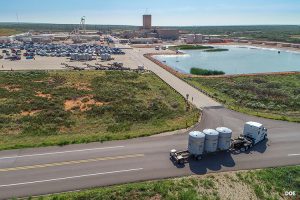 “A couple of years ago, I was asked to mediate a dispute between the U.S. Department of Energy (DOE) and the New Mexico Environment Department (NMED) concerning the renewal of a required state permit for DOE’s Waste Isolation Pilot Plant (WIPP), the nation’s only deep underground nuclear waste storage facility, located outside of Carlsbad, New Mexico. I thought I could help the two government entities but quickly came to realize that under the mediation procedures followed by New Mexico, the mediation would also involve citizen groups whose ultimate concurrence was essential to any complete resolution. This was entirely new to me.
“A couple of years ago, I was asked to mediate a dispute between the U.S. Department of Energy (DOE) and the New Mexico Environment Department (NMED) concerning the renewal of a required state permit for DOE’s Waste Isolation Pilot Plant (WIPP), the nation’s only deep underground nuclear waste storage facility, located outside of Carlsbad, New Mexico. I thought I could help the two government entities but quickly came to realize that under the mediation procedures followed by New Mexico, the mediation would also involve citizen groups whose ultimate concurrence was essential to any complete resolution. This was entirely new to me.
“In this case, there were seven such citizen groups entitled to participate and representing a variety of points of view. There was one group representing some of the government and business leaders of the town of Carlsbad who favored permit renewal on terms ensuring the continued long-term operation of WIPP. There were six groups expressing a variety of concerns about nuclear waste coming to New Mexico. They sought a more restrictive permit.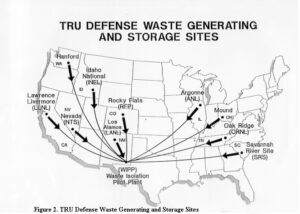
“To my astonishment, over the course of four full days, we worked through the multitude of issues and came to complete agreement. Something magical had happened. Thanks to the goodwill of the DOE and its contractor, the remarkable daily attendance and attentiveness of the NMED Secretary and the measured and well-informed way in which the various citizen groups made their points, we were able to find consensus and craft permit language that was acceptable to everyone.
“For me, as a former judge and mediator, the experience was thrilling. It was an experience of participatory democracy in action that made me proud of our fellow citizens and our government. Three aspects of the experience stand out. First, everyone in the room had taken responsibility for the way in which our nation’s only deep underground nuclear storage facility would be operated for the next 10 years. The citizen participants were not just making suggestions; they were assuming many of the attributes of decision makers. Second, all participants were advocating, compromising, and collaborating on behalf of what they saw as the public interest. These are the essential skills of democracy—the civic virtues so central to the Founders’ vision of what would make democracy work in America—and they require practice. Finally, over four days around a table, the citizens were able to take the measure of the DOE and NMED representatives. They came to realize, as I did, that these public servants, as well as the DOE contractor, were very well-informed, experienced, and intentioned. The government representatives had a similar experience of coming to appreciate the citizen questions and points of view. A government that relies on trust needs this kind of interaction to maintain that trust.
“It seems our democracy would be strengthened if we could extend the benefits of this kind of participatory structure to other areas of our legal and regulatory systems.”
“In Democracy in America, Alexis de Tocqueville made some of these points in reference to the jury trial in civil cases. He emphasized the importance of the civil jury trial as a free “public school” [https://contextus.org/Tocqueville,_Democracy_in_America_(1835),_Book_I,_Chapter_XVI_Causes_Mitigating_Tyranny_In_The_United_States_(Part_II).13?ven=Gutenberg&lang=en]  educating jurors in the democratic virtues and skills and teaching them to assume responsibility. In the same vein, every trial judge I know would attest to the importance of the jury experience for building confidence in the courts. After a trial, judges often hear words of gratitude from jurors who are deeply impressed by the legal process and are honored to have participated despite their initial dismay at being called to jury service. Sadly, the number of jury trials has diminished, particularly in federal court. Reversing that trend is a worthy goal, particularly for a branch of government that depends so heavily on public confidence.
educating jurors in the democratic virtues and skills and teaching them to assume responsibility. In the same vein, every trial judge I know would attest to the importance of the jury experience for building confidence in the courts. After a trial, judges often hear words of gratitude from jurors who are deeply impressed by the legal process and are honored to have participated despite their initial dismay at being called to jury service. Sadly, the number of jury trials has diminished, particularly in federal court. Reversing that trend is a worthy goal, particularly for a branch of government that depends so heavily on public confidence.
“As a final reflection: any persons involved as litigants will have an experience of the legal system. The experience can advance their sense of agency and participation, their ability to disagree civilly, and their trust in the courts. But how can these objectives be obtained when so many Americans cannot afford a lawyer? We can do so much better to provide understanding of and access to our justice system.”
The six New Mexico based non-governmental organizations were Citizens for Alternatives to Radioactive Dumping (CARD), Concerned Citizens for Nuclear Safety (CCNS), Conservation Voters New Mexico (CVNM), Nuclear Watch New Mexico, Southwest Alliance for a Safe Future (SAFE), and Southwest Research and Information Center (SRIC). The individual was Steve Zappe, a grandfather and former NMED WIPP Program Manager.
“A House of Dynamite” New Netflix Nuclear Catastrophe Film: Fiction, for Now
The reviews are rolling in for “A House of Dynamite,” which premiered in Europe earlier this month before coming to the U.S. on October 10th, with a full Netflix release scheduled for the 24th. Here’s the trailer, and see the schedule for Santa Fe theater showings here:
This Week! Santa Fe Theater Screenings for the Film “A House of Dynamite”
I attended one of these screenings last night, and I’ll let the professional critic reviews give the gist:
The Kathryn Bigelow thriller looks at what might happen if a ballistic missile were headed to the U.S. The director hopes the movie will start a conversation. New York Times: At Venice, ‘A House of Dynamite’ Is Scarier Than Most Horror Films
“The Netflix thriller captures from multiple perspectives the White House response to an unattributed missile launch headed for a major U.S. city in the harrowing 20 minutes until projected impact…”An unrelenting chokehold thriller so controlled, kinetic and unsettlingly immersive that you stagger out at the end of it wondering if the world will still be intact.” ‘A House of Dynamite’ Review: Idris Elba and Rebecca Ferguson in Kathryn Bigelow’s Precision-Tooled, Viscerally Unsettling Nail-Biter
“Told from the perspective of soldiers at a remote Alaskan missile base, staffers in the White House situation room, military officials at US Central Command (CENTCOM), and the president of the United States, the film weaves an overlapping timeline to show how the United States would respond to a missile attack…The film doesn’t want viewers to ask themselves how to thwart a nuclear attack on the United States. Rather, it wants the viewer to question the value of having nuclear weapons at all. ‘None of this makes sense,’ the President (Idris Elba) bemoans, ‘Making all these bombs and all these plans.'”
“A House of Dynamite is a terrifying examination of how terribly wrong things can go even with highly competent people in charge…But that’s also not necessarily the world we’re living in…The film shows why the worst can happen, even when competent, well-meaning people are trying to do the right thing.
But what if competence and decency are in short supply?” A House of Dynamite: Bigelow’s latest thriller shows why nuclear bombs are only part of the danger
This film left me reeling with tension and anxiety and exactly as the Times article titles it, is scarier than most horror films. Unlike ‘Oppenheimer,’ which largely glorified the invention of the atomic weapon, ‘A House of Dynamite’ makes it impossible to ignore the threat that nuclear weapons pose to our world. Working backwards from perspectives, and focused on how we can actually improve our odds of keeping this story a fictional one, here is what struck me most about this film:
-
-
Only one person decides what happens. But the real threat isn’t one reckless leader — it’s a reckless system. The final segment of the film features the “nuclear football” heavily, a briefcase containing launch procedures and options. In the United States, the president holds the sole and absolute authority to order the use of nuclear weapons. In the film, there are many voices in the President’s ear, but two primary perspectives quickly emerge after the defense fails and the ICBM remains inbound to its U.S. target: “One side advocates a retaliatory strike; the other, nothing. ‘It’s surrender or suicide,’ one adviser tells the President,” – thebulletin.org. The military aide carrying the nuclear football is tasked with providing the President the list of options if retaliation is chosen. An absolute must-read, Daniel Ellsberg’s book “The Doomsday Machine” breaks down many of the themes in the film with pure and terrifyingly honest account of Cold War-era nuclear strategy. In terms of launch authority, he describes how the inherent instability of the delegated command structure of the nuclear apparatus makes accidental or unwanted war an ever-present danger.
-
LANL tritium containers to head to Texas after last treatment
Four flanged tritium waste containers have been depressurized and transported to Los Alamos National Laboratory’s Weapons Engineering Tritium Facility, where they will be treated further before heading out-of-state for disposal.
By Alaina Mencinger amencinger@sfnewmexican.com | October 15, 2025 santafenewmexican.com
The containers’ final destination is Waste Control Specialists, a West Texas facility that handles the storage and disposal of radioactive waste.
The more than 1,300-acre facility in Andrews County is located on an approximately 14,000 acre property, which is sited on a thick clay formation which the company describes as “nearly impermeable.”
New documents have been added to the Los Alamos Legacy Cleanup Contract Electronic Public Reading Room.
All legacy cleanup documents required to be posted after April 30, 2018, are available on the site linked above.
For legacy cleanup documents that were posted prior to April 30, 2018, please visit the LANL electronic public reading room.
- Review, Notice of Completion of Off-Site Waste Shipments for Final Disposal, Activities 3.1.5, 3.1.8, and 3.3.4, Compliance Plan, Site Treatment Plan, Federal Facility Compliance Order Los Alamos National Laboratory [July 31, Aug. 21, 2025]
https://ext.em-la.doe.gov/GovFTPFiles/api/GetFiles/GetFile?fileName=EMID-703933_NMED_Review_STP_Shpmt_Jul_31_Aug_21_101525.pdf
Strong Political and Public Opposition Means Consolidated Interim Storage Facility (CISF) in NM “Impossible in the Near Future”
NEW UPDATE OCTOBER 10, 2025:
Holtec abandons plan to build New Mexico storage facility for spent nuclear fuel
This is excellent news. The Governor and state legislature (specifically Senator Jeff Steinborn and Representative McQueen) are to be commended for not allowing New Mexico to become the nation’s dumping ground for highly radioactive commercial spent fuel rods, especially when the Land of Enchantment has never had its own nuclear energy plant. Hard work from many New Mexicans made this happen.
So-called “interim” storage would never be interim when the federal government has failed for more than four decades to find a permanent repository for these lethal wastes. This also shows how hollow all the hype is about the claimed renaissance of nuclear power, when on the front end the industry can’t survive without taxpayer handouts, and on the back end can’t solve its radioactive waste problem.
Holtec’s quote that “New Mexico’s acquiescence is necessary” for interim storage to go forward is interesting, implying that we have to surrender as the nuclear colony that we are. Well, guess what, we didn’t surrender, and I predict you’ll see more of this. Moreover, whether you’re pro-nuclear or anti-nuclear, Holtec is an ethically questionable company, which is why the attorneys general of New Jersey and Massachusetts have sued it.
Adiós and good riddance, Holtec!
New York Times: Tax Break Scandal Leads to $5 Million Fine for N.J. Energy Company
SEE MORE:
Nuclear Weapons Issues & The Accelerating Arms Race: September 2025
Nuclear Weapons Update:
Putin has offered Trump a one-year extension of the numerical cap on strategic nuclear weapons in the new Strategic Arms Reduction Treaty which is 1,550 warheads (however, B52s are counted as one warhead while they can carry a dozen). New START expires in February 2026, which will be the first time the world will be without any nuclear arms control treaties since the mid-1970s. Trump has said it sounded like a good idea.
Note: New START ratification in 2010 provided the opportunity for Republicans in the Senate to attach the condition of $88 billion for nuclear weapons “modernization” that has since metastasized to ~$2 trillion. Nuclear disarmament must be prioritized as the ultimate goal over simply continued arms control.
A mere extension of the numerical cap would not involve Congressional ratification. The extension of New START’s numerical cap is in part to allow for a year in which to begin negotiations for a treaty replacement.
Plutonium Pit Production:
A draft plutonium pit production programmatic environmental impact statement is expected to be released next year in early 2026.
Accelerating Arms Race:
Is North Korea set to become world’s ‘fourth ICBM power’ after missile breakthrough? | Park Chan-kyong | South China Morning Post | September 11, 2025
A new era in North Korea’s missile programme may be dawning, as analysts warn of an imminent test launch of an intercontinental ballistic missile capable of carrying multiple warheads to the US mainland. Fresh from his appearance at China’s Victory Day parade in Beijing last week, North Korean leader Kim Jong-un personally oversaw the trial of a lighter, more robust solid-fuel ICBM engine, state media reported on Tuesday, touting the achievement as a “strategic” breakthrough.
Saudi Arabia signs a mutual defense pact with nuclear-armed Pakistan after Israel’s attack on Qatar | MUNIR AHMED & JON GAMBRELL | AP NEWS | September 18, 2025
DUBAI, United Arab Emirates (AP) — Pakistan’s defense minister says his nation’s nuclear program “will be made available” to Saudi Arabia if needed under the countries’ new defense pact, marking the first specific acknowledgment that Islamabad had put the kingdom under its nuclear umbrella.
Defense Minister Khawaja Mohammad Asif’s comments underline the importance of the pact struck this week between Pakistan and Saudi Arabia, which have had military ties for decades.
The move is seen by analysts as a signal to Israel, long believed to be the Middle East’s only nuclear-armed nation. It comes after Israel’s attack targeting Hamas leaders in Qatar last week killed six people and sparked new concerns among Gulf Arab nations about their safety as the Israel-Hamas war devastated the Gaza Strip and set the region on edge.
Russia suspected of helping North Korea build nuclear submarines, Seoul investigating | Park Chan-kyong | South China Morning Post | September 18, 2025
South Korea is investigating reports that Russia has supplied North Korea with nuclear submarine reactor modules, a move analysts see as highly plausible and one that could mark a breakthrough in Pyongyang’s decades-long push for a nuclear-powered navy… At the 8th Party Congress in January 2021, North Korea declared five core defence goals, including the development of nuclear-powered submarines and submarine-launched strategic nuclear weapons.
China Hardens Military Stance Against U.S. With Nuclear Weapons and Tough Talk | Brian Spegele | The Wall Street Journal| September 18, 2025
China played down its rapidly rising military might for years. In the past few weeks, Beijing has broadcast a steady drumbeat of firepower displays and muscular rhetoric, carrying an unmistakable warning for the U.S… Part of China’s confidence stems from the rapid growth of its firepower. The Pentagon estimates that China’s stockpile of nuclear warheads has more than doubled since 2020, alongside a growing array of options to launch those weapons, from mobile ground-launch systems to increasingly stealthy submarines.
Holtec Pulls Out of New Mexico Spent Nuclear Fuel Interim Storage Project
Holtec International has confirmed it is canceling plans to build a consolidated interim storage facility for spent nuclear fuel in southeastern New Mexico.
By Radwaste Solutions | October 9, 2025 ans.org
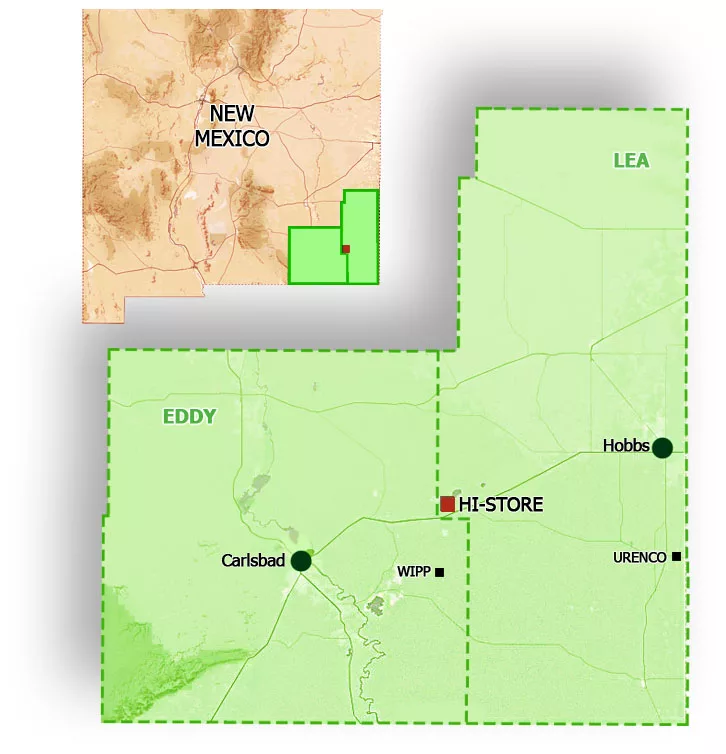
Named the HI-STORE CISF, the facility would have stored up to 10,000 canisters of commercial SNF on land owned by the Eddy-Lea Energy Alliance (ELEA) near the towns of Carlsbad and Hobbs.
“After discussions with our longtime partner in the HI-STORE project, the Eddy-Lea Energy Alliance, and due to the untenable path forward for used fuel storage in New Mexico, we mutually agreed upon canceling the agreement. This allows for ELEA to work to redevelop the property in a manner that fits their needs and allows Holtec to work with other states who are amenable to used fuel storage based on the recent DOE work on public education and outreach,” Holtec said in a statement (emphasis added).
Following the U.S. Supreme Court’s June ruling in NRC v. Texas, which found that petitioners did not have standing to challenge the Nuclear Regulatory Commission’s licensing of Interim Storage Partners’ CISF in Texas, Holtec said it expected to have its HI-STORE CISF license reinstated, allowing the company to move forward with the project. Holtec and ISP’s NRC licenses were vacated by the 5th Circuit Court of Appeals in a 2023 ruling.
Despite the court’s decision, New Mexico Gov. Michelle Lujan Grisham said she remained committed to preventing the HI-STORE CISF from being built. In 2023, New Mexico passed a bill barring the storage and disposal of high-level radioactive waste in New Mexico without the state’s explicit consent.
The AI Doomsday Machine Is Closer to Reality Than You Think
“Most troubling to experts on AI and nuclear weapons is that it’s getting harder and harder to keep decisions about targeting and escalation for nuclear weapons separate from decisions about conventional weapons.”
“There is no standing guidance, as far as we can tell, inside the Pentagon on whether and how AI should or should not be integrated into nuclear command and control and communications,” says Jon Wolfsthal, director of global risk at the Federation of American Scientists.
By Michael Hirsh | September 2, 2025 politico.com
Jacquelyn Schneider saw a disturbing pattern, and she didn’t know what to make of it.
Last year Schneider, director of the Hoover Wargaming and Crisis Simulation Initiative at Stanford University, began experimenting with war games that gave the latest generation of artificial intelligence the role of strategic decision-makers. In the games, five off-the-shelf large language models or LLMs — OpenAI’s GPT-3.5, GPT-4, and GPT-4-Base; Anthropic’s Claude 2; and Meta’s Llama-2 Chat — were confronted with fictional crisis situations that resembled Russia’s invasion of Ukraine or China’s threat to Taiwan.
Director Kathryn Bigelow is Sounding the Nuclear Alarm – Washington Post New Review
“A House of Dynamite” asks: How would the White House respond in the face of a nuclear attack?
By Max Boot | October 2, 2025 washingtonpost.com
VIEW MORE: “A House Of Dynamite” Q&A w/ Director Kathryn Bigelow, Tracy Letts, Jared Harris, And More At New York Film Fest —
80th Commemorations of Ban the Bomb – Trinity, Hiroshima & Nagasaki Remembrances in New Mexico
Exchange Monitor: DNFSB makes agency fixes, but needs members, GAO finds
The Defense Nuclear Facilities Safety Board (DNFSB) has tackled all but a few third-party recommendations to improve its culture over the past decade but suffers from a depleted board, according to a new report.
By ExchangeMonitor | September 5, 2025 santafenewmexican.com
Progress is tough with the five-person board probably…
China Hardens Military Stance Against U.S. With Nuclear Weapons and Tough Talk
Xi positions Beijing as powerful center of new global order as security forum convenes in capital
By Brian Spegele | September 18, 2025 wsj.com
BEIJING—China played down its rapidly rising military might for years. In the past few weeks, Beijing has broadcast a steady drumbeat of firepower displays and muscular rhetoric, carrying an unmistakable warning for the U.S….
Saudi Arabia signs a mutual defense pact with nuclear-armed Pakistan after Israel’s attack on Qatar
While not specifically discussing the bomb, the agreement states “any aggression against either country shall be considered an aggression against both,” according to statements issued by both Pakistan’s Foreign Affairs Ministry and the state-run Saudi Press Agency.
By MUNIR AHMED and JON GAMBRELL | September 18, 2025 apnews.com
ISLAMABAD (AP) — Saudi Arabia and nuclear-armed Pakistan have signed a mutual defense pact that defines any attack on either nation as an attack on both — a key accord in the wake of Israel’s strike on Qatar last week.
The kingdom has long had close economic, religious and security ties to Pakistan, including reportedly providing funding for Islamabad’s nuclear weapons program as it developed. Analysts — and Pakistani diplomats in at least one case — have suggested over the years that Saudi Arabia could be included under Islamabad’s nuclear umbrella, particularly as tensions have risen over Iran’s atomic program.
COMMUNITIES FOR CLEAN WATER: LANL Radioactive Tritium Venting Fails to Provide Transparency, Assurance, and Respect for Local Communities
FOR IMMEDIATE RELEASE: September 18, 2025
Santa Fe, NM — As NNSA and LANL continue operations to depressurize Flanged Tritium Waste Containers, Communities for Clean Water (CCW) calls out federal agencies for issuing vague assurances instead of transparent, verifiable data — and for dismissing community concerns with contradictory and incomplete statements that disregard what independent experts have found, the Department of Energy’s (DOE) own legal obligations, and the New Mexico Environment Department’s (NMED) acknowledgment that LANL has a long record of compliance failures.
“How can our communities be expected to trust LANL when they won’t give us access to the raw, real-time monitoring data – independently verified by the EPA,” asks Joni Arends with Concerned Citizens for Nuclear Safety. “Without this transparency, LANL is continuing a legacy of empty assurances, not accountability.”
Key Concerns:
-
Lack of real-time transparency – Since Friday (Sept. 12), the public has been forced to rely on NMED’s Facebook page for piecemeal updates. While LANL’s website provides very brief daily summaries, no near-real-time monitoring dashboard from DOE, NNSA, or LANL has been made available.
-
Vague assurances, not real information – NNSA’s updates claim “no tritium was released” while simultaneously telling the public to expect “very low levels of tritium” for subsequent venting. Without numbers, monitoring data, or detection thresholds, these phrases do not provide reassurance.
-
Weather risks – LANL has not disclosed thresholds for wind, rain, or humidity that would postpone venting. Communities watch weather shifts in real time but are left in the dark about how safety decisions are being made.
-
Dismissal of public health concerns – When asked for plain-language guidance that NMED stated LANL would provide, LANL responded only with “no offsite impact anticipated.” This is not meaningful and reassuring guidance, it’s a blanket dismissal that disregards independent expert findings and fails to meet DOE’s obligations to protect vulnerable populations.
-
Ignoring daily lifeways – Avoiding Pueblo Feast Days is not enough. This is harvest season, when outdoor cultural events, youth programs, and farming are in full swing. LANL’s scheduling continues to disregard these realities.
Unanswered Questions
Independent experts and community advocates have raised critical unanswered questions:
-
Unclear “depressurization” – LANL said “no internal pressure was found” in a container, but also claimed it was “depressurized.” If no pressure existed, what was released?
-
Unanswered helium questions – NMED stated helium was released, but LANL has not explained its origin. Was it introduced at sealing of the outer container, or a decay product of tritium?
-
Monitoring limits undisclosed – LANL has not disclosed the detection limits of its monitoring equipment. Readings “indistinguishable from zero” could still mask releases.
DOE NNSA Gives Misleading Statements on Native America Calling
On a recent Native America Calling program, DOE NNSA’s Los Alamos Field Office Deputy Director Pat Moss compared LANL venting to global natural tritium stocks. Independent expert Dr. Arjun Makhijani pointed out this comparison as misleading: “The problem is not global background, but local contamination. If venting occurs in rain and calm winds, local rainfall could exceed U.S. drinking water standards by hundreds to thousands of times.”
In their most recent public meeting, LANL admitted that infants could receive three times the radiation dose as adults. During the interview, Dr. Makhijani pressed this point – if adults are modeled at 6 mrem, that means infants could be at 18 mrem, nearly double the EPA’s 10 mrem compliance limit. Instead of addressing this directly, Mr. Moss provided a stock line, “We will be compliant with the regulatorily imposed release threshold and will be doing the calculations per the regulation.”
That is exactly the problem – hiding behind regulatory caps while ignoring clear evidence that infants, our most vulnerable, face exposures above legal limits.
DOE NNSA also pointed to the Defense Nuclear Facilities Safety Board (DNFSB) – an independent federal oversight body created by Congress – as if it had declared the tritium venting operation as “fully protective of the public”. That is misleading. First, the DNFSB has been operating without a quorum for months, limiting its ability to issue independent recommendations. Second, what the Board staff said in its July 2025 presentation was that the overall nuclear safety risk to the public is low if DOE’s proposed controls are followed. The DNFSB has also flagged ongoing safety concerns at LANL including deficiencies in Area G’s safety analysis and risk to workers.
First of four containers of tritium waste at LANL has been vented
The first of four flanged tritium waste containers awaiting removal from Los Alamos National Laboratory has been vented, the New Mexico Environment Department announced Tuesday afternoon.
By Alaina Mencinger amencinger@sfnewmexican.com | September 16, 2025 santafenewmexican.com
The container can now be moved for treatment at LANL and then, eventually, to an off-site disposal area.
No internal pressure was found in the first container, according to the National Nuclear Security Administration, suggesting the inner containers in the flanged tritium waste container hadn’t leaked. Air monitoring did not show an increase of tritium beyond background levels, the federal agency wrote.
No tritium emissions were released, the Environment Department wrote in its Tuesday post on X, formerly Twitter. Both the state agency and the U.S. Environmental Protection Agency are monitoring the process.
The depressurization of the containers is set to continue at 7 a.m. Wednesday, although the NNSA noted the schedule is subject to change due to weather. The four containers will be vented one at a time over an estimated two-week period.
*The featured image differs from the article photo due to usage rights.
New Mexicans Can Save the DNFSB; Contact Our Senators Today
From our friends at Concerned Citizens for Nuclear Safety:
The independent Defense Nuclear Facilities Safety Board has been dwindling from a five-member board to one member and may disappear if we, the People, do not raise our voices to support its essential nuclear safety work. The Safety Board needs at least two new members. And that needs to get done by Saturday, October 18th. https://www.dnfsb.gov/about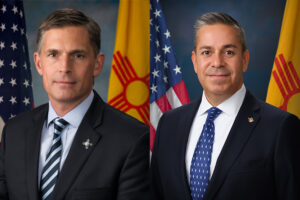
New Mexico U.S. Senators Heinrich and Lujan have key roles to play to ensure the Safety Board’s work continues unimpeded. https://www.heinrich.senate.gov/ and https://www.lujan.senate.gov/ Our voices of support are essential to ensure communities continue to receive the essential services of the Safety Board and its staff.
Right now members of the Safety Board’s staff are monitoring the venting of radioactive tritium from Area G at Los Alamos National Laboratory (LANL). Their expertise in the field of nuclear safety and their demonstrated competence and knowledge relevant to their independent investigative and oversight functions are an essential part of the process. They will be part of the follow-up once the venting of the four flanged tritium waste containers is completed. https://tewawomenunited.org/?s=tritium, https://www.ccwnewmexico.org/tritium, https://nuclearactive.org/
Not only does the Safety Board have staff at LANL, but also at Sandia National Laboratories in Albuquerque and at the Waste Isolation Pilot Plant, the burial site for plutonium contaminated nuclear weapons waste, near Carlsbad. https://ananuclear.org/facilities/
Russia suspected of helping North Korea build nuclear submarines, Seoul investigating
Analysts said such a technology transfer was plausible given Pyongyang’s support for Russia’s ongoing war in Ukraine
By Park Chan-kyong | September 18, 2025 scmp.com
South Korea is investigating reports that Russia has supplied North Korea with nuclear submarine reactor modules, a move analysts see as highly plausible and one that could mark a breakthrough in Pyongyang’s decades-long push for a nuclear powered navy…
Nuclear News Archive – 2022
Chairman Smith, Senator Warren Introduce Bill Establishing “NO FIRST USE” Policy for Nuclear Weapons
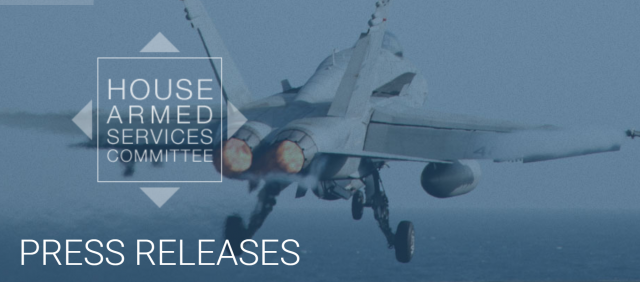 armedservices.house.gov | WASHINGTON DC January 30th, 2019
armedservices.house.gov | WASHINGTON DC January 30th, 2019
Today, Representative Adam Smith (D-WA), Chairman of the House Armed Services Committee, and United States Senator Elizabeth Warren (D-MA), a member of the Senate Armed Services Committee, introduced the bicameral No First Use Act, to establish in law that it is the policy of the United States not to use nuclear weapons first.
Today the United States explicitly retains the option to be the first to use nuclear weapons in a conflict, even in response to a non-nuclear attack. The No First Use Act would codify what most Americans already believe—that the United States should never initiate a nuclear war.
“Our current nuclear strategy is not just outdated—it is dangerous,” said the lawmakers in a joint statement. “By making clear that deterrence is the sole purpose of our arsenal, this bill would reduce the chances of a nuclear miscalculation and help us maintain our moral and diplomatic leadership in the world.”
The No First Use Act would strengthen U.S. national security by:
– Reducing the risk of a nuclear miscalculation by an adversary during a crisis
– Strengthening our deterrence and increasing strategic stability by clarifying our declaratory policy
– Preserving the U.S. second-strike capability to retaliate against any nuclear attack on the U.S. or its allies
Since there has been no public release by the National Nuclear Security Administration (NNSA) of an outline of plans about activities to shutter the Mixed Oxide Fuel Fabrication Facility (MFFF) at DOE’s Savannah River Site (SRS) in South Carolina, the public remains in the dark about MOX closure plans. A Freedom of Information Act request has been filed by Savannah River Site Watch (SRS Watch) for the “Statement of Work” that DOE has contracted with Savannah River Nuclear Solutions for project closure.
Trump is Fixating on Another ‘Wall’ That Will Almost Certainly Fail to Live Up to his Promises
BY THE TIMES EDITORIAL BOARD | latimes.com
In 1983, in what came to be known as his “Star Wars” speech, President Ronald Reagan unveiled an ambitious vision for a missile defense system that would render the need for traditional nuclear deterrence unnecessary. Reagan asked: “What if free people could live secure in the knowledge that their security did not rest upon the threat of instant U.S. retaliation to deter a Soviet attack, that we could intercept and destroy strategic ballistic missiles before they reached our own soil or that of our allies?”
The “Star Wars” label proved prophetic, because Reagan’s vision of an impermeable shield that would deflect incoming nuclear missiles proved to be the stuff of science fiction. Missile defense has achieved modest successes, but it also has been marked by embarrassing failures.
Comment by the Information and Press Department on Space-based Elements Outlined in the US Missile Defence Review
mid.ru | We have taken note that in the US Missile Defence Review (MDR) published on January 17, a serious emphasis is placed on the formation of a space-based missile defence group, including missile interceptors. Deployment of such systems in space is ostensibly designed to make it easier to destroy different types of missiles in the boost phase over enemy territory. To achieve this, the US Defence Department has been instructed to study the most advanced technology, as well as draw up a time schedule, costs and personnel requirements.
We consider this to be further evidence (on a par with the decision to create space-based armed forces and the allocation of funds for the development of space-based missile defence) of Washington’s real intention to use outer space for combat operations and ensuring US domination in space in the near future. We are deeply disappointed that instead of developing constructive dialogue on the issues of strategic stability and preventing an arms race in space the US preferred to return to the implementation of yet another version of Ronald Reagan’s Star Wars programme.
A new abnormal: It is still 2 minutes to midnight
Humanity now faces two simultaneous existential threats, either of which would be cause for extreme concern and immediate attention. These major threats—nuclear weapons and climate change—were exacerbated this past year by the increased use of information warfare to undermine democracy around the world, amplifying risk from these and other threats and putting the future of civilization in extraordinary danger.
There is nothing normal about the complex and frightening reality just described.
Doomsday Clock Stays at Two Minutes to Midnight as Crisis Now ‘New Abnormal’
Warning that ‘We are like passengers on the Titanic, ignoring the iceberg ahead’ in face of nuclear arms and climate change threats
The former California governor Jerry Brown, left, and former US secretary of defence William Perry unveil the Doomsday Clock in Washington DC on Thursday. Photograph: Mark Wilson/Getty ImagesBY JULIAN BORGER in Washington | – theguardian.com |
The risk to global civilisation from nuclear weapons and climate change remains at an all-time high, according to a group of prominent US scientists and former officials, who said the world’s predicament had become the “new abnormal”.
The Bulletin of the Atomic Scientists announced that its symbolic “doomsday clock”, unveiled every year, was stuck at two minutes to midnight, the same as last January. The only other time the Bulletin has judged the world as being this close to catastrophe was 1953, in the early volatile stages of the cold war.
The reasons given by the Bulletin’s panel of experts included the collapse of arms control treaties, and the emphasis in Washington and Moscow on modernising nuclear arsenals rather than dismantling them, and the lack of political will to reverse climate change.
“We are like passengers on the Titanic, ignoring the iceberg ahead, enjoying the fine food and music,” said Jerry Brown, the former governor of California, said. Since leaving office this month, Brown has become the Bulletin’s executive chairman, citing the imminent threats to humanity. “It’s late and it’s getting later. We have to wake people up. And that’s what I intend to do!”
Watchdogs Fight WIPP Permit Change
By Rebecca Moss santafenewmexican.com | Jan 17, 2019 Updated Jan 18, 2019
Nuclear watchdog organizations filed an appeal Thursday of a state Environment Department-approved permit change they say could allow for 30 percent more nuclear waste to be held at a Southern New Mexico storage site.
The request for a New Mexico Court of Appeals review of the agency’s decision in December, which alters procedures for measuring the volume of waste at the Waste Isolation Pilot Plant near Carlsbad, was filed on behalf of Nuclear Watch New Mexico and the Southwest Research and Information Center.
The groups allege the permit change violates federal law by allowing plant managers to recalculate the amount of nuclear waste buried underground at WIPP without going through Congress.
The move subtly sidesteps nuclear waste limits outlined under the 1992 Land Withdrawal Act, the groups say.
‘Trump Could Hardly Have Chosen a Worse Moment’
In a DER SPIEGEL interview, German Foreign Minister Heiko Maas laments America’s rejection of multilateralism and says that Donald Trump does not view the U.S. as the leading power among liberal democracies. He’s hoping to save the INF.
Interview by CHRISTIANE HOFFMAN and CHRISTOPH SCHULT | spiegel.de
DER SPIEGEL: Mr. Minister, United States President Donald Trump has turned against a global order based on international rules and agreements. In response, you called for the creation of an “Alliance of Multilateralists” last summer. How is that alliance coming along?
Maas: It’s growing. Many countries are seriously concerned that the principle of might makes right is once again being applied internationally.
Donald Trump’s Space Missile Plan Is Too Expensive and Will Not Work, Just Like His Border Wall, Experts Say
President Donald Trump’s new global missile defense plan would be too expensive and technologically taxing to effectively implement, leading experts have said.
The president unveiled his 2019 Missile Defense Review, the first of its kind since 2010, during an address Thursday at the Pentagon. He pledged to virtually eliminate any external threat to the United States, vowing to “to ensure that we can detect and destroy any missile launched against the United States anywhere, anytime.”
Commenting on this statement specifically, Ploughshares Fund think tank director Joseph Cirincione said during a press call that this “is simple to say, impossible to do.”
“If you liked the president’s border wall, wait until you see his space wall,” Cirincione, who also served as a professional staff member of House Armed Services Committee and Government Operations Committee responsible for congressional oversight of missile defense programs in the 1980s and early 1990s, added. “This is a complete fantasy.”
Advocacy Groups Go to Court to Stop WIPP Waste Volume Accounting Change
“Rather than pursuing the permit modification, the Department of Energy should comply with the legal capacity limit and begin a public process to explain what additional waste it wants to bring to WIPP and how it intends to address the loss of disposal space that cannot be used because of the significant underground contamination,” said Scott Kovac, operations and research director of NukeWatch.
BY: WAYNE BARBER
Two advocacy groups in New Mexico filed a legal appeal Thursday seeking to undo a New Mexico Environment Department order that allows the Energy Department to change the way it records underground transuranic waste volume at its Waste Isolation Pilot Plant (WIPP) near Carlsbad.
The Southwest Research and Information Center (SRIC) and Nuclear Watch New Mexico (NWNM) filed their notice of appeal in the New Mexico Court of Appeals to block the modification to WIPP’s state hazardous waste permit.
While it technically takes effect this month, as a practical matter the new counting system won’t be instituted right away because DOE has not drafted its policy on implementation, said SRIC Administrator Don Hancock by email.
A Dec. 21 order from then-state Environment Department Secretary Butch Tongate authorized DOE to stop recording empty spaces between container drums as waste. The order adopted the findings of state Hearing Officer Max Shepherd, who recommended waste volume counted against the disposal cap set by the 1992 WIPP Land Withdrawal Act should cover only the actual waste inside containers.
Appeal Targets Permit Change for US Nuclear Repository
By Associated Press | Thursday, January 17th, 2019 at 12:33pm
ALBUQUERQUE, N.M. — Watchdog groups are appealing a recent permit change approval by New Mexico regulators that could ultimately allow for more waste to be placed at the U.S. government’s only underground nuclear waste repository.
The approval by the state Environment Department came in the final days of former Gov. Susana Martinez’s administration. The change was requested earlier by the U.S. Energy Department and the contractor that operates the Waste Isolation Pilot Plant.
The permit modification changes the way the volume of waste is calculated. Specifically, it excludes the empty space inside waste packaging containers.
The Southwest Research and Information Center and Nuclear Watch New Mexico argue the modification is unlawful.
Critics also are concerned the change could be a first step in expanding the repository’s mission to hold other kinds of waste.
Smith Statement on Trump Missile Defense Review
Washington, DC – Today, House Armed Services Committee Chairman Adam Smith (D-WA) released the following statement about the Trump administration’s Missile Defense Review:
“The missile defense policy of the United States must follow some key principles.”
“First, it is essential that we ensure we are spending money on programs that are reliable and rigorously tested before they are deployed. We need to know that we are putting scarce taxpayer dollars to good use, for example improving reliability of the current system, rather than rushing to buy and deploy unproven missile defense systems. It is common sense to insist on this principle when it comes to programs that protect the American people and our allies, particularly in the context of the growing North Korea threat.
“Second, we must avoid missile defense policies that will fuel a nuclear arms race. Strategic stability is an essential component of U.S. national security, and it does not serve our long-term interest to take steps that incentivize Russia and China to increase the number and capability of their nuclear weapons.
“While it is essential that we continue investing in proven missile defense efforts, I am concerned that this missile defense review could lead to greater investment in areas that do not follow these principles, such as a space-based interceptor layer that has been studied repeatedly and found to be technologically challenging and prohibitively expensive.
“Moreover, we must consider missile defense and effective arms control policy as part of our deterrence capabilities. I am gravely concerned about President Trump’s broader strategy to withdraw us from international arms control agreements, dismiss allies, and expand the role of nuclear weapons in U.S. defense policy, which could further siphon funding from much-needed budget priorities and exacerbate a new nuclear arms race.”
armscontrol.org | January 17th, 2019
The Trump administration’s long-awaited Missile Defense Review, which was released today, proposes a significant and costly expansion of the role and scope of U.S. missile defenses that is likely to exacerbate Russian and Chinese concerns about the threat to their strategic nuclear deterrents, undermine strategic stability, and further complicate the prospects for additional nuclear arms reductions.
Of particular concern was President Donald Trump’s statement during his remarks at the Pentagon that the goal of U.S. missile defenses is to “ensure we can detect and destroy any missile launched against the United States anywhere, anytime, anyplace.” This would be a costly, unachievable, and destabilizing departure from longstanding policy and contradicts the text of the review, which limits U.S. homeland missiles defense to their traditional role of defending against limited attacks from North Korea or Iran. Continue reading
US to Begin INF Treaty Pullout Next Month After Russia Missile Talks Fail
Officials reject Russian offer to inspect new missile; US says it will suspend observance of treaty on 2 February.
By JULIAN BORGER in Washington theguardian.com | Wed 16 Jan 2019 18.29 EST
Sergei Lavrov, Russia’s foreign minister, accused the US of intransigence.Photograph: Pavel Golovkin/AP
The US has rejected Moscow’s offer to inspect a new Russian missile suspected of violating a key cold-war era treaty, and warned that it would suspend observance of the treaty on 2 February, giving six-month notice of a complete withdrawal.
The under-secretary of state for arms control and international security, Andrea Thompson, confirmed the US intention to withdraw from the treaty after a meeting with a Russian delegation in Geneva, which both sides described as a failure.
Nuclear arms treaty faces collapse after failed US-Russia talks
By BEN SIMON/ AP channelnewsasia.com
Geneva (AFP) – The survival of a key nuclear arms control treaty was cast further in doubt Tuesday after the US and Russia blamed each other for pushing the agreement to the brink of collapse.
Senior diplomats from both countries met in Geneva amid widespread concern over the fate of the bilateral Intermediate-Range Nuclear Forces Treaty, which successfully put an end to a mini-arms race after it was signed in 1987.
US President Donald Trump said in October that his country would pull out of the deal unless Russia stops violating it. Russian President Vladimir Putin has threatened to develop nuclear missiles banned under the treaty if it is scrapped.
Permit Changes at WIPP Face Challenges

By Mark Oswald | Journal Staff Writer
abqjournal.com | Sunday, January 13th, 2019 at 12:01am
U.S. Sen. Tom Udall is encouraging Gov. Michelle Lujan Grisham’s new administration to reconsider a state government decision made just before she took office Jan. 1 that changes how radioactive waste volume is measured at the Waste Isolation Pilot Plant, in effect allowing more waste to placed in the underground repository near Carlsbad.
Udall said last week that limits on how much waste WIPP can hold were critical to federal-state negotiations that led to WIPP’s creation “and were a major reason New Mexico agreed to this mission in the first place.”
“I am encouraging the new administration to take a hard look at this action, and hopeful that it will pause and reconsider this last-minute change that has major ramifications for our state,” the senator said in an email statement.
The controversial state permit modification for WIPP, approved by then-New Mexico Environment Department Secretary Butch Tongate on Dec. 21, changes the way waste volume is calculated to exclude empty space inside waste packaging. With the alteration, WIPP becomes only about a third full instead of 50 percent full.
Continue reading
More Nuclear Waste Coming to New Mexico
Albuquerque Journal
By Mark Oswald / Journal Staff Writer
Sunday, January 13th, 2019 at 12:01am
U.S. Sen. Tom Udall is encouraging Gov. Michelle Lujan Grisham’s new administration to reconsider a state government decision made just before she took office Jan. 1 that changes how radioactive waste volume is measured at the Waste Isolation Pilot Plant, in effect allowing more waste to placed in the underground repository near Carlsbad.
Udall said last week that limits on how much waste WIPP can hold were critical to federal-state negotiations that led to WIPP’s creation “and were a major reason New Mexico agreed to this mission in the first place.”
An inspector monitors radiations around containers at Los Alamos National Laboratory in 2003 prior to shipping nuclear waste to the Waste Isolation Pilot Plant near Carlsbad. New Mexican file photo; Drums of transuranic waste are stored inside a salt cavern at the Waste Isolation Pilot Plant in Carlsbad in 2006. Los Angeles Times file photo
By Rebecca Moss rmoss@sfnewmexican.com
santafenewmexican.com | Jan 5, 2019 Updated Jan 6, 2019
In the final days of Republican Gov. Susana Martinez's administration, the state Environment Department approved a controversial change to how federal officials measure the amount of nuclear waste buried some 2,000 feet underground in Southern New Mexico salt beds.
Proponents of the change say it merely clarifies that the storage site will measure the actual volume of transuranic waste deposited there rather than the volume of the massive exterior waste drums, called overpack containers — and the air inside. But critics say the result will be an increase in the quantity of material stored at the U.S. Department of Energy's Waste Isolation Pilot Plant near Carlsbad.
Several nuclear watchdog groups, which say they intend to appeal the decision, also fear the change in WIPP's hazardous waste permit from the state could open the door to allowing high-level nuclear waste to be brought into New Mexico.
Jon Kyl Voted for New Nukes After Taking Payments From Nuclear Company
The senator-turned-lobbyist-turned-senator-turned-lobbyist had a paid board seat at one nuclear company and lobbied for two others. Then he joined the Senate.
WASHINGTON, DC – SEPTEMBER 05: U.S. Sen. John Kyl (R-AZ) awaits Vice President Mike Pence before a mock swear-in ceremony on September 5, 2018 in Washington, DC. The former senator Kyl was tapped by Arizona Gov. Doug Ducey to replace the late Sen. John McCain. (Photo by Zach Gibson/Getty Images)By Alex Kotch readsludge.com | JAN 10, 2019 4:10PM EST
After almost 30 years of a program to clean up dangerous defense waste at the Hanford nuclear site in southeastern Washington, the Department of Energy now wants to change the rules to make the job easier and save money. If approved, the proposal poses new dangers to the health and safety of people and the environment — not just in southeastern Washington, but at nuclear sites around the country.
After Sen. John McCain’s death in August 2018, Arizona Gov. Doug Ducey appointed former Republican Senator Jon Kyl to replace him—despite Kyl having spent years lobbying his former colleagues for an array of defense, utility, nuclear, tech, and social media companies that have business before the chamber. Government watchdogs warned of potential ethics issues, but Kyl was allowed to step aside from his K Street job and work on legislation without acknowledging conflicts of interest or recusing himself.
News broke on Monday that Kyl is rejoining his previous employer, lobbying firm Covington & Burling, after his four-month stint in the Senate.
Renew Nuclear Arms Control, Don’t Destroy It
By Andrew Lichterman and John Burroughs
Andrew Lichterman is Senior Research Analyst for Western States Legal Foundation, based in Oakland, California. John Burroughs is Executive Director of Lawyers Committee on Nuclear Policy, based in New York City.
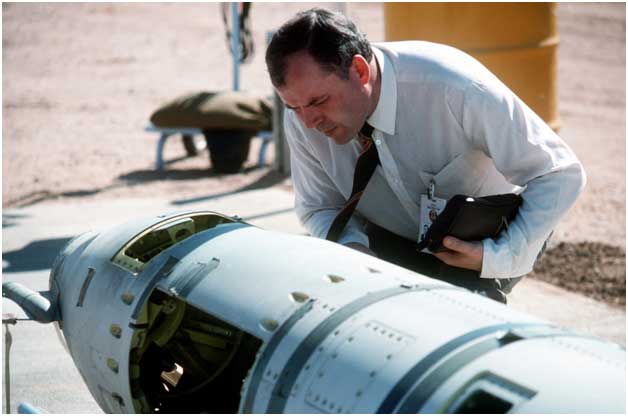
ipsnews.net | NEW YORK, Jan 2 2019 (IPS)
A hard-earned lesson of the Cold War is that arms control reduces the risk of nuclear war by limiting dangerous deployments and, even more important, by creating channels of communication and understanding. But President Donald Trump and his National Security Advisor John Bolton appear to have forgotten, or never learned, that lesson.
In late October, Trump announced an intent to withdraw from the Intermediate-Range Nuclear Forces (INF) Treaty. Secretary of State Mike Pompeo subsequently stated that the US will suspend implementation of the treaty in early February. While US signals have been mixed, initiation of withdrawal at that point or soon thereafter appears likely.
Don’t let feds change the rules for cleaning up Hanford nuclear waste
The public can comment on the U.S. Department of Energy’s proposed changes to Hanford nuclear waste cleanup rules until Jan. 9.
A sign warns of high levels of radiation near a valve at the “C” tank farm of the Hanford Nuclear Reservation near Richland. (AP Photo / Ted S. Warren, 2014)By Tom Carpenter
NukeWatch NM and Hanford Challenge are both members of the Alliance for Nuclear Accountability.
seattletimes.com | Originally published January 2, 2019 at 3:11 pm
After almost 30 years of a program to clean up dangerous defense waste at the Hanford nuclear site in southeastern Washington, the Department of Energy now wants to change the rules to make the job easier and save money. If approved, the proposal poses new dangers to the health and safety of people and the environment — not just in southeastern Washington, but at nuclear sites around the country.
In 1943, the U.S. government built the massive complex at Hanford to manufacture plutonium for nuclear weapons. When defense production ceased in 1986, its nine reactors had produced enough material for 60,000 atomic bombs. What remains is North America’s most contaminated site — more than half a billion gallons of nuclear waste and toxic chemicals stored in leaking tanks and dumped into the ground.
New LANL director: Community relations is a priority
BY MARK OSWALD / JOURNAL STAFF WRITER
Sunday, January 6th, 2019 at 12:02am
The new director of Los Alamos National Laboratory says that, along with the lab’s nuclear weapons missions, its science and engineering efforts, and upgrading operational functions, community relations will be a key piece of LANL’s agenda under new operator Triad National Security, LLC.
LANL’s ex-operator cited for another safety violation
BY MARK OSWALD / JOURNAL STAFF WRITER
Friday, January 4th, 2019 at 11:02pm
SANTA FE – The nuclear security wing of U.S. Department of Energy has issued preliminary notice of a “serious” safety violation for a 2017 mishap at Los Alamos National Laboratory that the DOE previously described as a “near miss to a fatality.”
Vladimir Putin on nuclear war: U.S. is pushing world ‘closer to a very dangerous line
The U.S. is threatening to suspend a Cold War treaty limiting medium-range missiles because it says one of Russia’s weapons violates the agreement.
By Yuliya Talmazan and Alexander Smith
Russian President Vladimir Putin warned Thursday that the world is underestimating the threat of nuclear war and blamed the U.S. for risking a collapse in global arms controls.
nbcnews.com | Dec. 20, 2018 / 1:16 AM PST / Updated Dec. 20, 2018 / 7:04 AM PST
The U.S. is threatening to suspend a Cold War treaty limiting medium-range missiles because it says one of Russia’s weapons violates the agreement.
During his annual marathon news conference Thursday, Putin insisted that Washington was to blame. Most experts agree Russia has been violating the Intermediate-Range Nuclear Forces Treaty, signed in 1987 by President Ronald Reagan and Soviet leader Mikhail Gorbachev.
However, many of those same analysts have criticized President Donald Trump for walking away from the INF Treaty. They argue that quitting it won’t bring Russia into line, and instead could trigger an arms race with ground-based nuclear missiles returning to Europe for the first time in decades.Continue reading
Don’t Tear Up This Treaty
Arms control isn’t perfect. But abandoning treaties without a plan for the future is dangerous.
The Editorial Board
The editorial board represents the opinions of the board, its editor and the publisher. It is separate from the newsroom and the Op-Ed section.
nytimes.com | Dec. 15, 2018
Every American president from John F. Kennedy to Barack Obama has successfully negotiated an agreement with the Soviet Union, or the Russian federation, to reduce the threat from both countries’ vast nuclear arsenals. More than a dozen treaties limiting nuclear testing, nuclear weapons, activities in outer space and missile defense have been part of this mix.
The need for such restraint is irrefutable: No weapons are more lethal and potentially more destabilizing to the world than those that have earned the moniker “city killers.”Continue reading
Letter from 26 Senators Responding to Trump’s Nuclear Policy

FOR IMMEDIATE RELEASE: Thursday, December 13, 2018
FOLLOWING PRESIDENT TRUMP’S ALARMING DECISION TO DEVELOP NEW NUCLEAR WEAPONS WHILE ALSO MOVING TO UNILATERALLY ABANDON THE BIPARTISAN NUCLEAR TREATIES THAT HAVE HELPED KEEP THE WORLD SAFE FROM NUCLEAR WAR FOR DECADES, SENATORS GILLIBRAND, MERKLEY, WARREN, MARKEY, FEINSTEIN, KLOBUCHAR LEAD GROUP OF 26 SENATORS IN CALLING ON PRESIDENT TRUMP TO WORK TO PRESERVE THESE VITALLY IMPORTANT TREATIES, AVOID DRAGGING OUR COUNTRY INTO A DANGEROUS NEW NUCLEAR ARMS RACE WITH RUSSIA
Senators: “Your Administration’s Efforts to Double Down on New, Unnecessary Nuclear Weapons While Scrapping Mutually Beneficial Treaties Risks the United States Sliding Into Another Arms Race with Russia and Erodes U.S. Nonproliferation Efforts Around the World”
Russia Just Sent Two Nuclear-Capable Bombers to Venezuela
By VLADIMIR ISACHENKOV / AP time.com
(MOSCOW) — Two Russian nuclear-capable strategic bombers arrived in Venezuela on Monday, a deployment that comes amid soaring Russia-U.S. tensions.
Russia’s Defense Ministry said a pair Tu-160 bombers landed at Maiquetia airport outside Caracas on Monday following a 10,000-kilometer (6,200-mile) flight. It didn’t say if the bombers were carrying any weapons and didn’t say how long they will stay in Venezuela.
ANA Press Release
Alliance for Nuclear Accountability
immediate release: Tuesday, November 27, 2018
Watchdog groups call for Congress to protect nuclear weapons communities—stop DOE limitations on Safety Board
Watchdog groups from across the country are insisting the Department of Energy withdraw DOE Order 140.1, a controversial order that would compromise safety at dozens of facilities in the US nuclear weapons complex, and are asking key Congressional committees to annul the revised order and preserve the critically important prerogatives of the Defense Nuclear Facilities Safety Board (DNFSB).
 DOE MUST RESTORE DEFENSE NUCLEAR FACILITIES SAFETY BOARD ACCESS TO INFORMATION, NUCLEAR SECURITY FACILITIES, AND PERSONNEL
DOE MUST RESTORE DEFENSE NUCLEAR FACILITIES SAFETY BOARD ACCESS TO INFORMATION, NUCLEAR SECURITY FACILITIES, AND PERSONNEL
What’s HappenedOn May 14, 2018, the Department of Energy (DOE) Deputy Secretary approved DOE Order 140.1 Interface with the Defense Nuclear Facilities Safety Board, which limits release of information, limits the DNFSB’s access to nuclear security sites, and personnel. The impacts are already being felt by Congress, the Board, DOE contractors and workers, and in communities located near some of the most dangerous nuclear facilities across the nation. |
ANA’s MessageThe Alliance for Nuclear Accountability has reviewed DOE Order 140.1 and believes it imposes a level of constraint on DNFSB that jeopardizes the important mission of the Safety Board. In fact, it may well violate the legislation that established the Board. ANA groups and the public at major DOE sites have come to rely on the Safety Board’s expertise to identify and hold accountable the DOE and National Nuclear Security Administration for worker and public safety related issues. |
ANA Letter to Congress
November 27, 2018
RE: DOE Order 140.1 should be annulled by Congress
Dear House/Senate Armed Services Committee Members:
We are writing to ask that you annul the May 2018 DOE Order 140.1, Interface with the Defense Nuclear Facilities Safety Board and reinstate the previous DOE Order 140.1.
The Defense Nuclear Facilities Safety Board (“DNFSB” or “Safety Board”) was established by Congress in September 1988 (Public Law 100-456) in response to growing concerns about health and safety protection that the Department of Energy (“DOE”) was providing the public and workers at defense nuclear facilities. In so doing, Congress sought to provide the general public with an independent source of critical oversight to add assurance that DOE’s defense nuclear facilities are safely designed, constructed, operated, and decommissioned. Over the past 30 years, the Safety Board’s authority and funding has been supported by Congress on a bi-partisan basis.
Self-reported violations at LANL increase three-fold in a year
By Sarah Halasz Graham
An 85-gallon drum of radioactive waste leaked into its secondary container. Nearly two dozen waste containers were either mislabeled or not labeled at all. Officials failed to conduct mandated hazardous waste inspections.
During Los Alamos National Laboratory’s most recent fiscal year, officials logged 69 instances of noncompliance with the federal permit that allows the facility to store, manage and treat hazardous waste, according to a newly released annual report that details the violations.
European diplomats mount last-ditch effort to stop US scrapping INF treaty
BY JULIAN BORGER in Washington |
theguardian.com
Sun 18 Nov 2018 03.00 EST Last modified on Sun 18 Nov 2018 10.52 EST
– 1987 treaty has kept nuclear weapons out of Europe
– Trump announced withdrawal from deal with Russia in October
European officials are seeking to act as intermediaries between Russia and the US in the hope of salvaging a cold war-era arms control treaty that Donald Trump has threatened to scrap.
However, the diplomats involved are not confident of success in the effort to save the 1987 Intermediate-range Nuclear Forces (INF) treaty. Although they have the support of senior officials in the US defence and state departments, they face opposition from the White House, particularly from the national security adviser, John Bolton.
Incoming HASC Chair: Scale Back Plans for New Nukes
BY MARCUS WEISGERBER defenseone.com
NOVEMBER 14, 2018
Rep. Adam Smith laid out new terms for a debate over the Pentagon’s plans to expand the military’s nuclear arsenal.
The incoming chairman of the House Armed Services Committee is taking aim at the Trump administration’s plans to expand America’s nuclear arsenal.
While Democrats will only control one chamber of Congress for the next two years, Rep. Adam Smith, D-Wash., called for lawmakers to “totally redo the Nuclear Posture Review,” the administration’s blueprint for replacing Cold War-era nuclear weapons with newer ones envisioned to be aroundContinue reading
Trump’s Defense Spending Is Out of Control, and Poised to Get Worse
BY MATT TAIBBI rollingstone.com
Using a time-honored trick, a bipartisan congressional panel argues we should boost the president’s record defense bill even more
A bipartisan commission has determined that President Trump’s recent record defense bill is insufficiently massive to keep America safe, and we should spend more, while cutting “entitlements.”
The National Defense Strategy Commission concluded the Department of Defense was too focused on “efficiency” and needed to accept “greater cost and risk” to search for “leap-ahead technologies” to help the U.S. maintain superiority.
Nuclear fallout: $15.5 billion in compensation and counting
BY JAMIE GREY & LEE ZURIK mysuncoast.com
November 12, 2018 at 1:00 PM EST – Updated November 12 at 10:54 AM
LOS ALAMOS, NEW MEXICO (InvestigateTV) – Clear, plastic water bottles, with the caps all slightly twisted open, fill a small refrigerator under Gilbert Mondragon’s kitchen counter. The lids all loosened by his 4- and 6-year old daughters because, at just 38, Mondragon suffers from limited mobility and strength. He blames his conditions on years of exposure to chemicals and radiation at the facility that produced the world’s first atomic bomb: Los Alamos National Laboratory. Mondragon is hardly alone in his thinking…
Continue reading
LANL Groundwater Discharge Permit Hearing Underway
BY TRIS DEROMA – lamonitor.com |
In opening testimony at a groundwater discharge permit hearing Wednesday, attorneys for a Los Alamos National Laboratory contractor said spraying the ground with water with remediated levels of chromium and RDX is environmentally safe. Chromium and RDX are known carcinogens. The chemicals are from contamination plumes found on the grounds of the laboratory in the 2000s.
Continue reading
NNMCAB Discusses Potential Impacts of DOE’s Possible Redefinition Of High-Level Radioactive Waste
BY MAIRE O’NEILL
The Northern New Mexico Citizens Advisory Board is asking Department of Energy (DOE) Environment Management and New Mexico Environment Department to address the potential impacts of the possible redefinition of high-level radioactive waste (HLW) for the board.
Donald Trump Welcomes In the Age of “Usable” Nuclear Weapons
BY James Carroll, TomDispatch – truthout.org |
Nuclear News Archives – 2021
Nothing Found
It seems we can’t find what you’re looking for. Perhaps searching can help.

